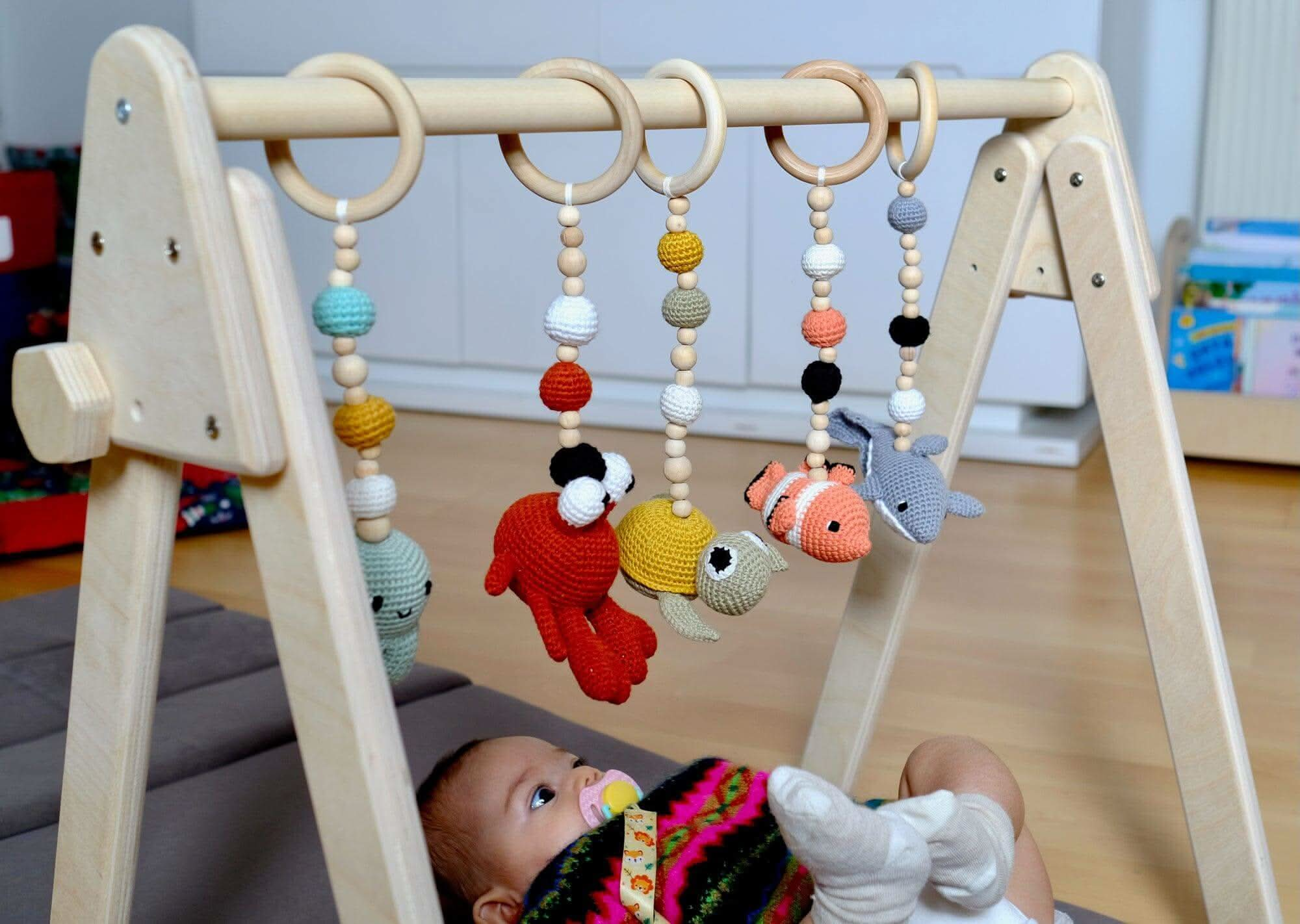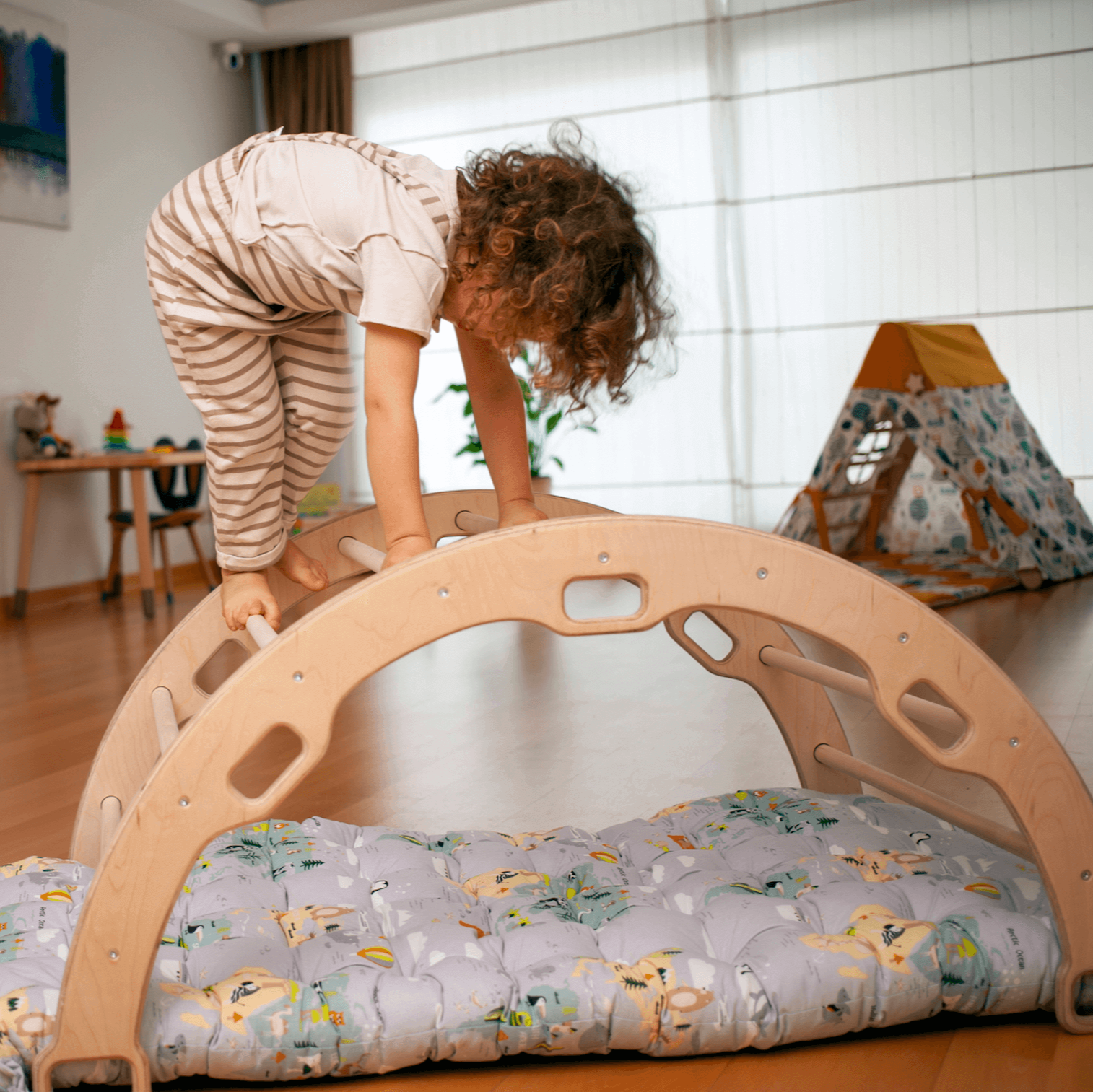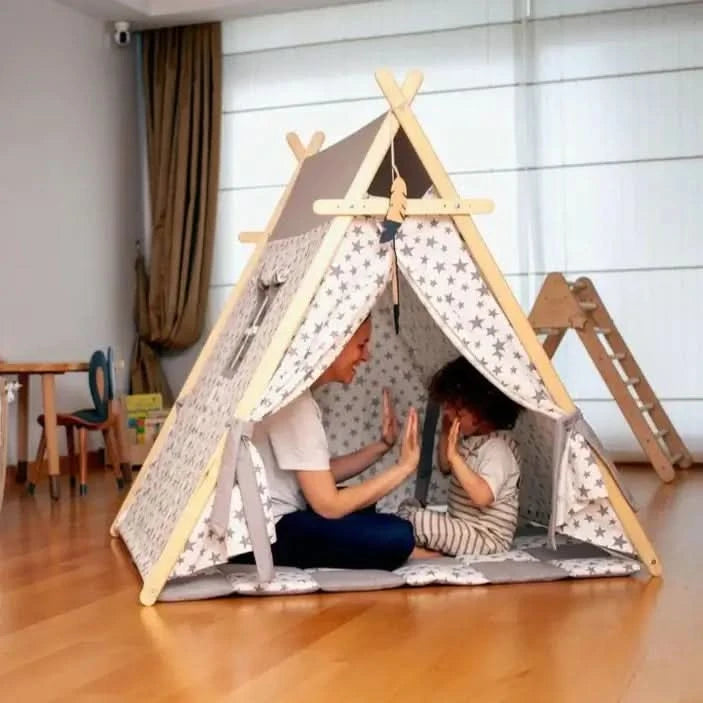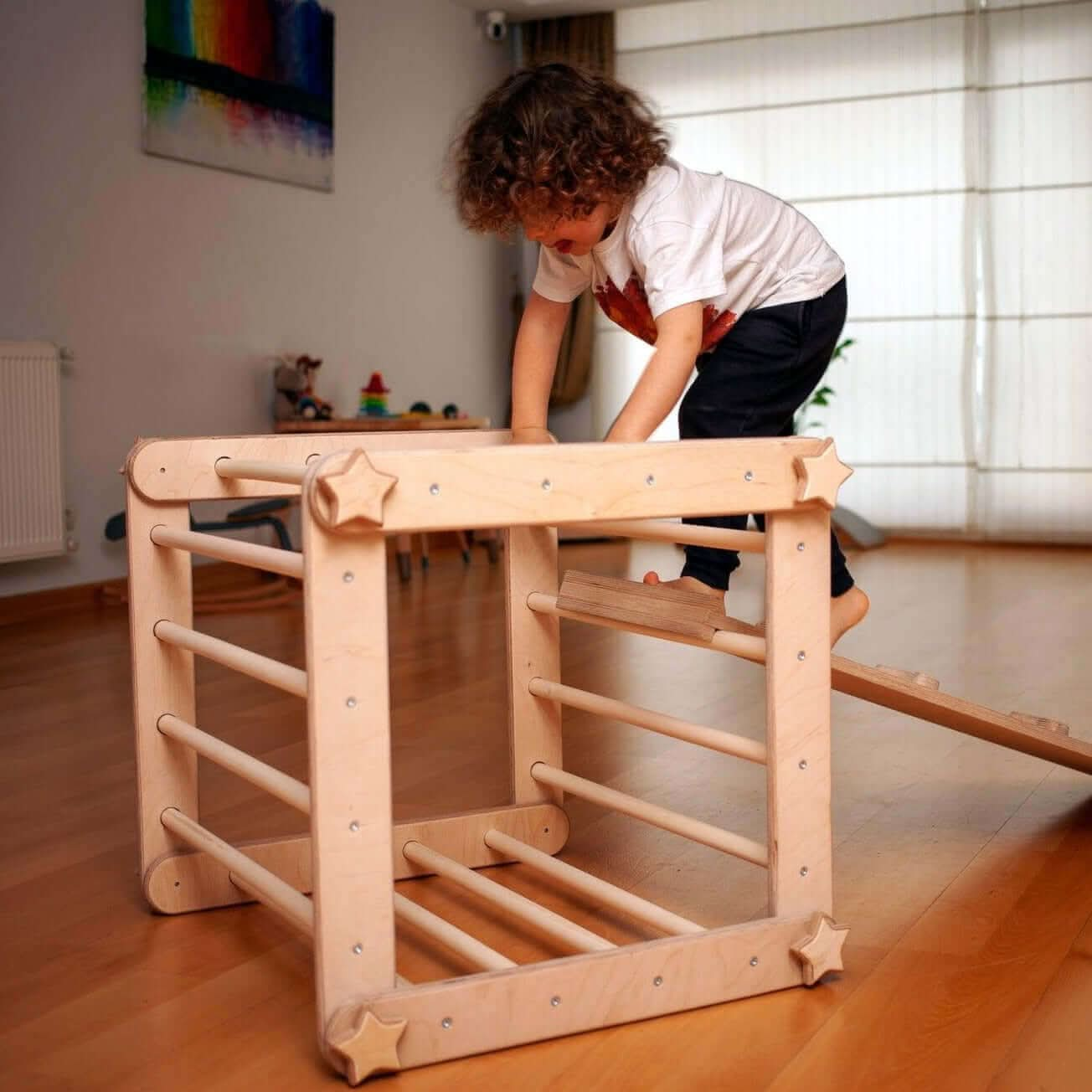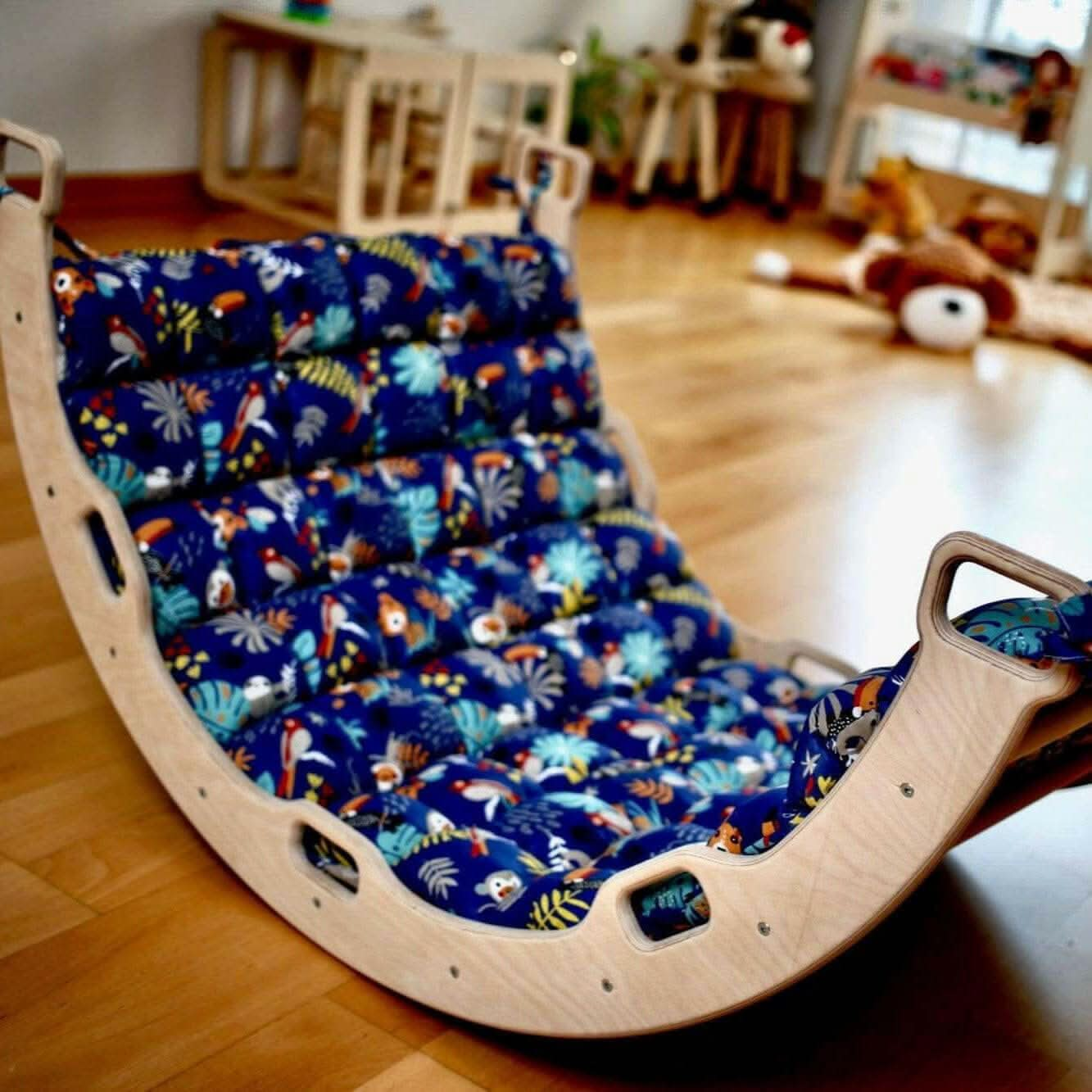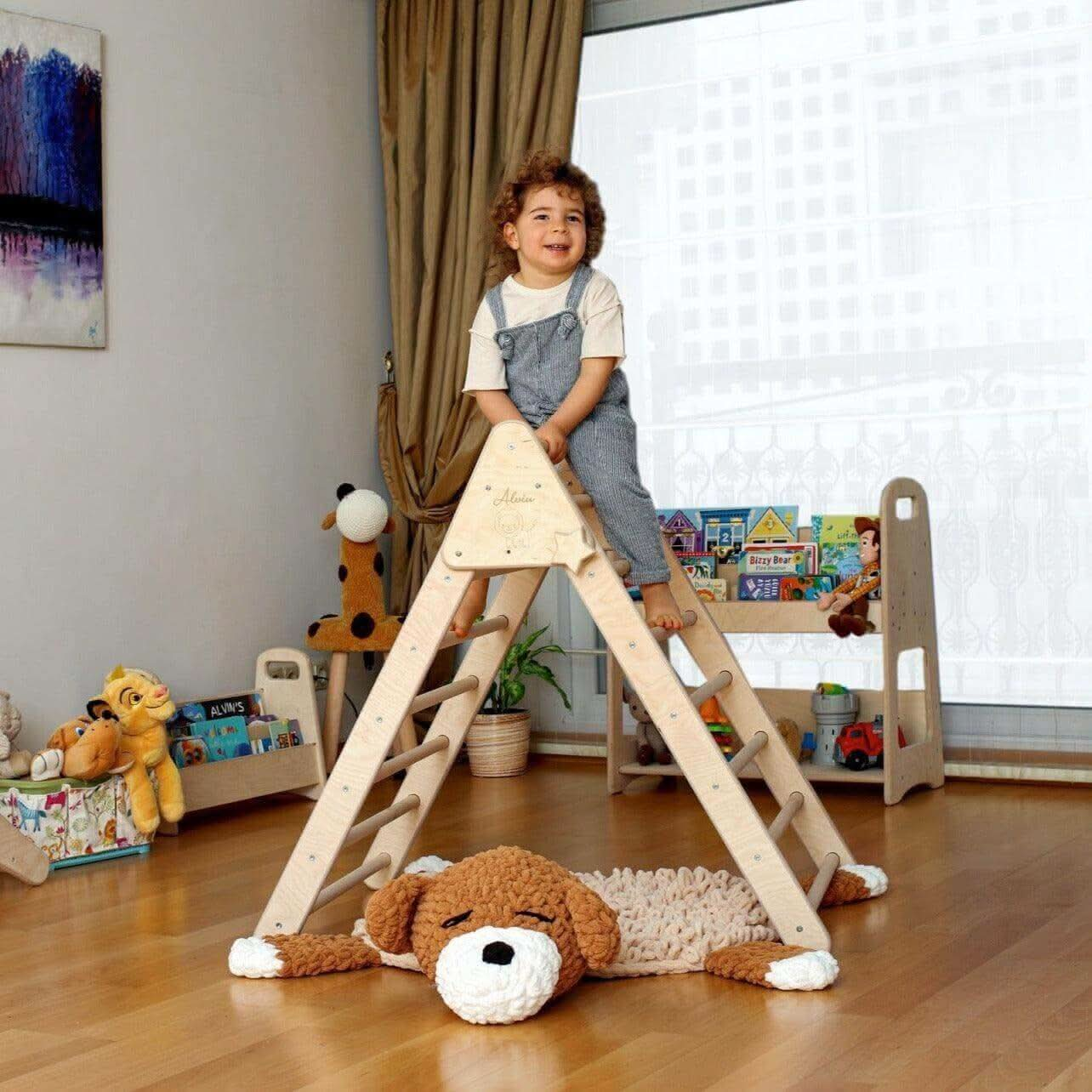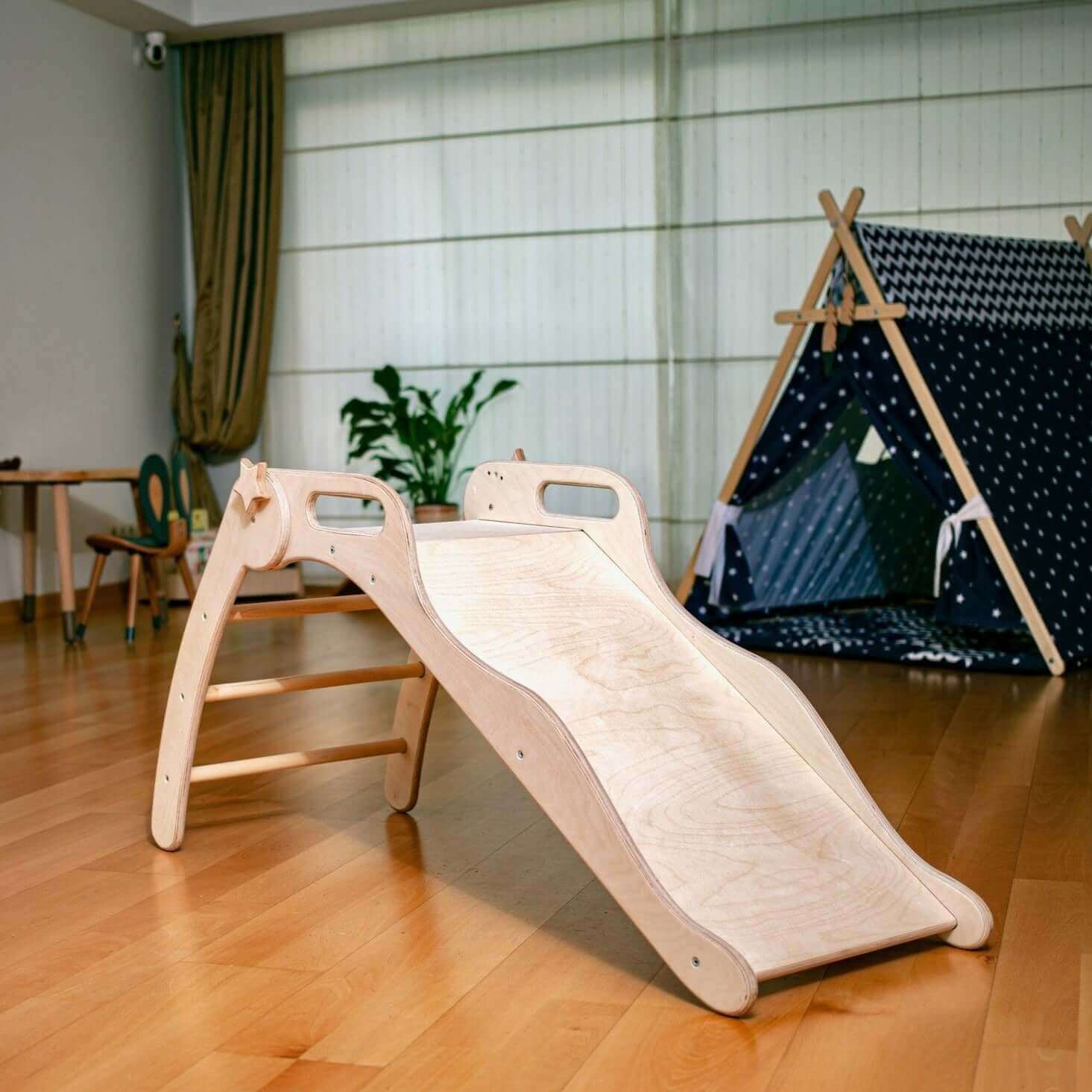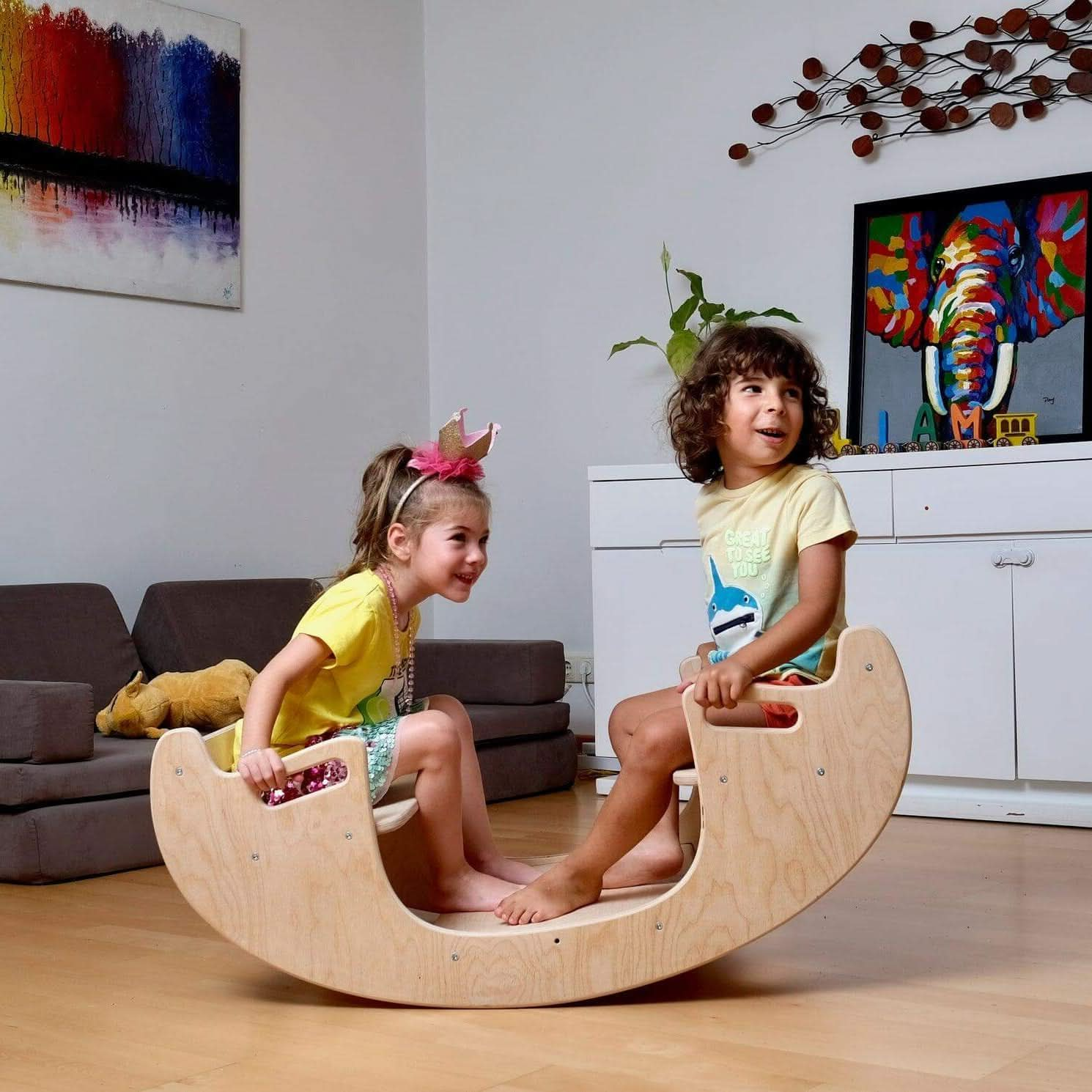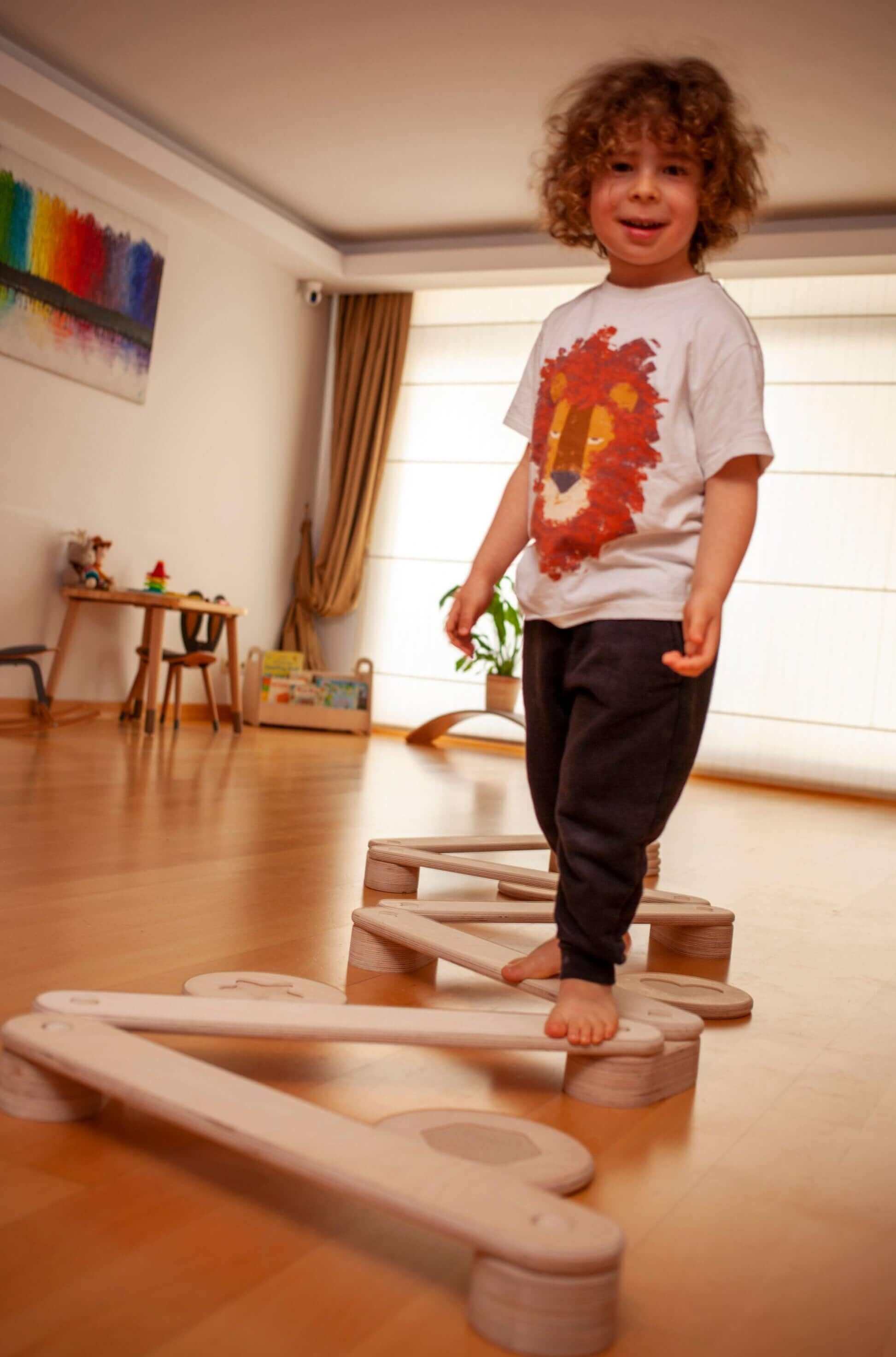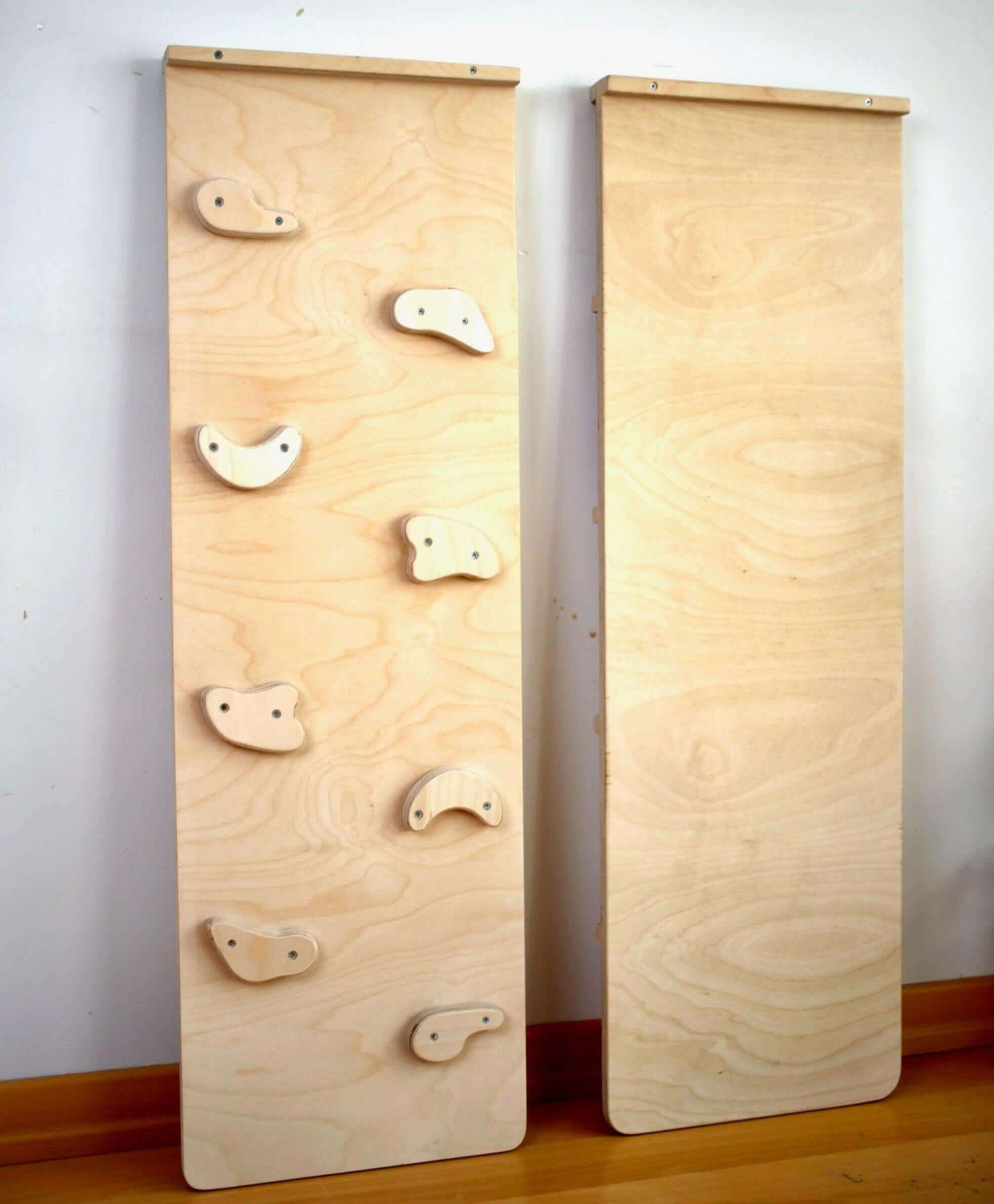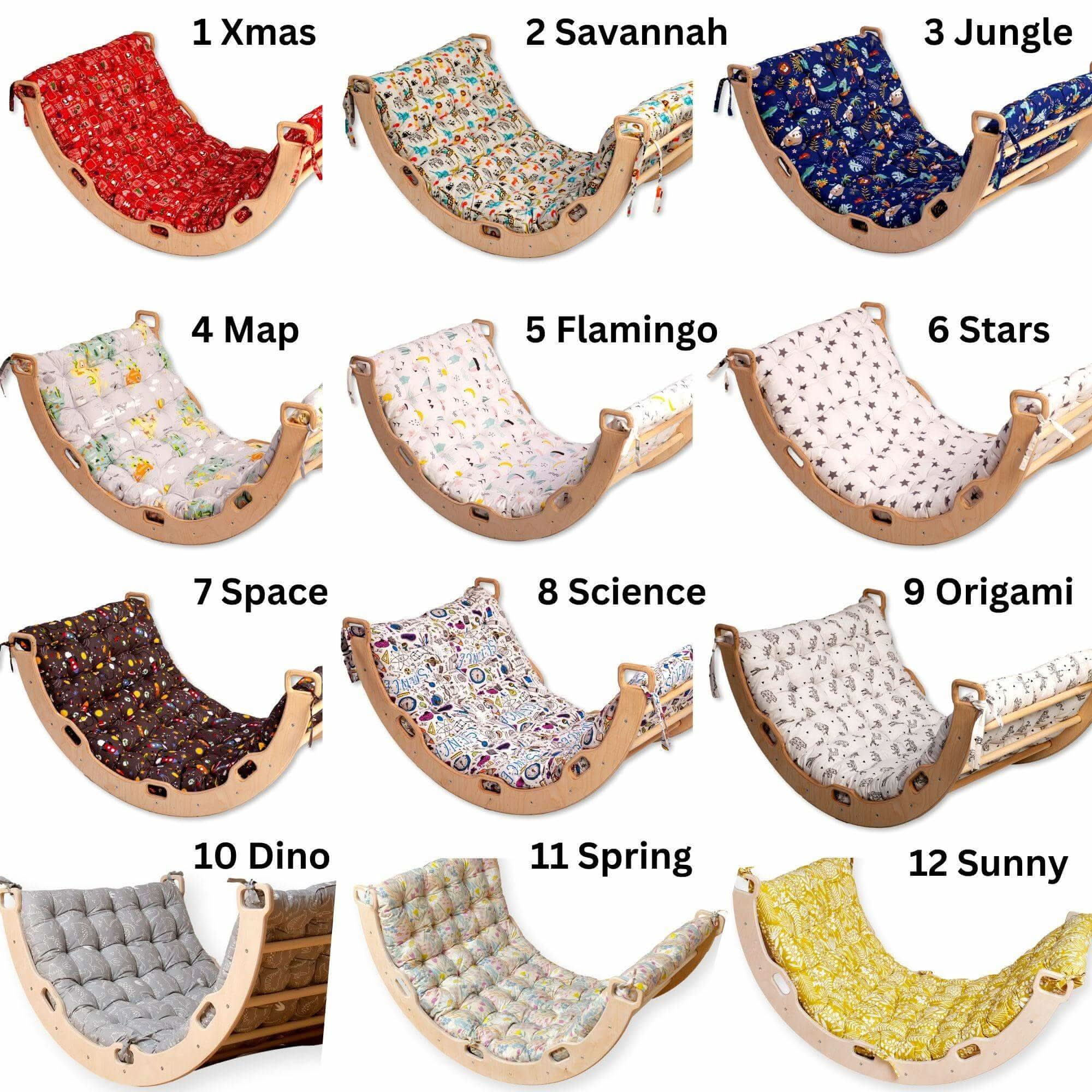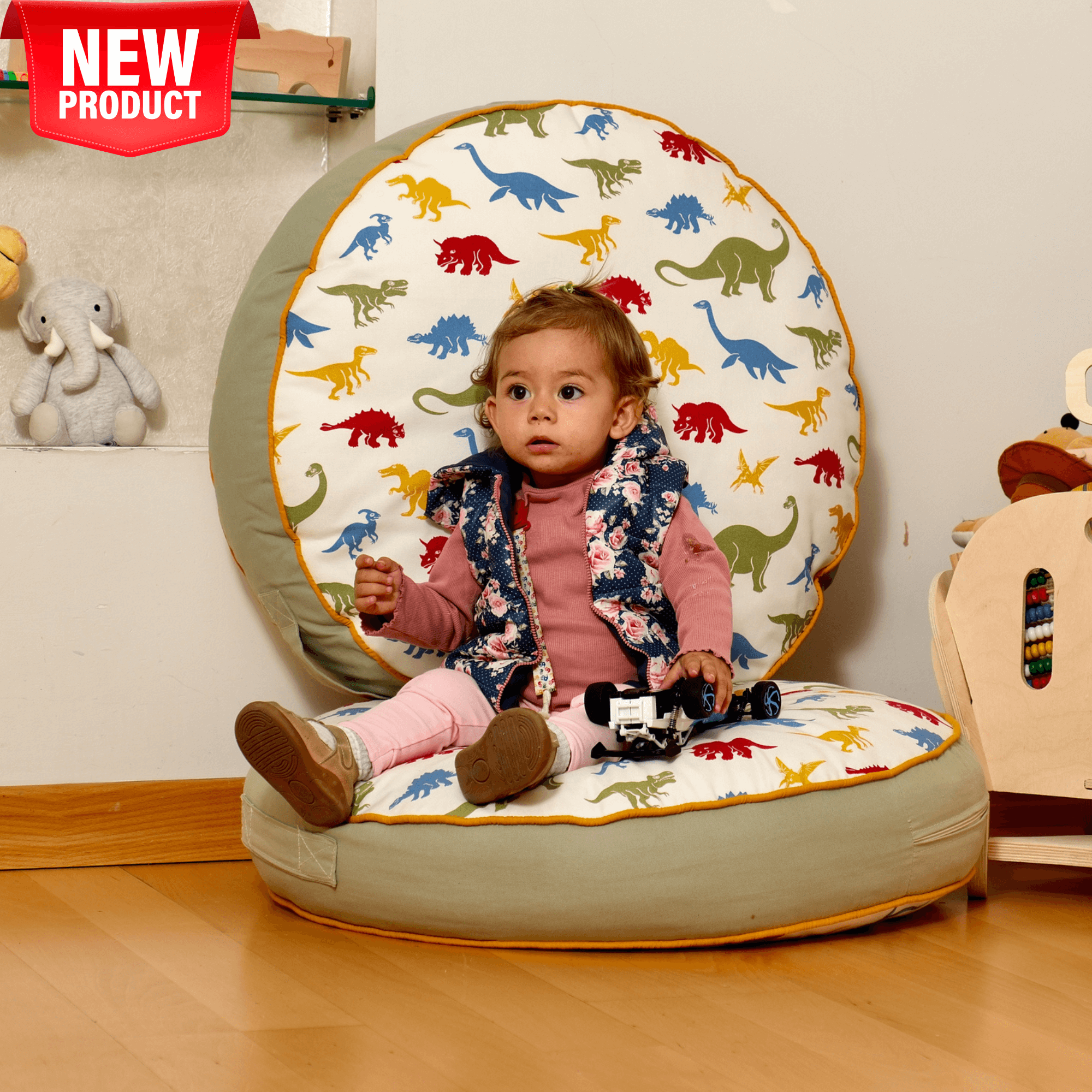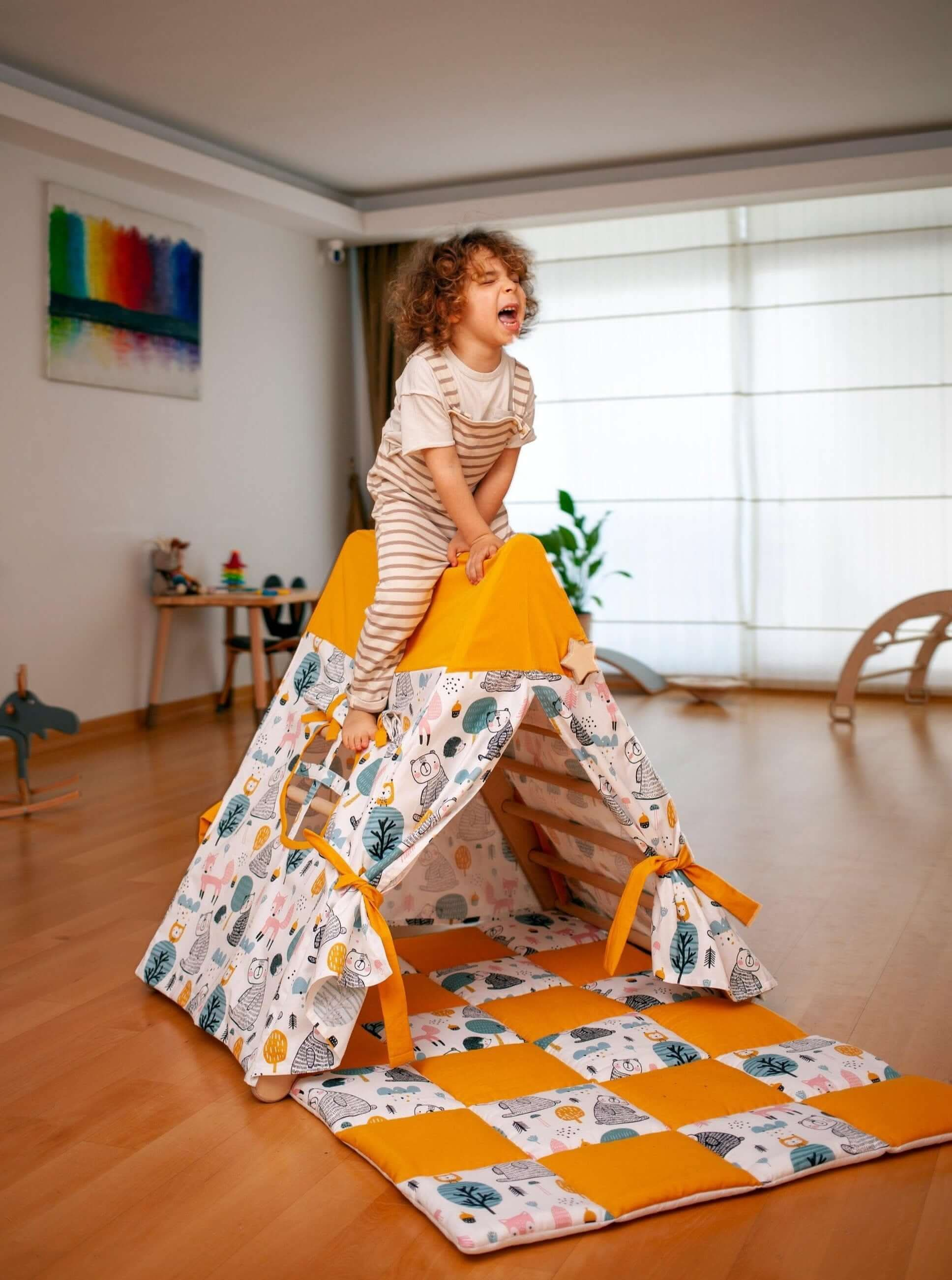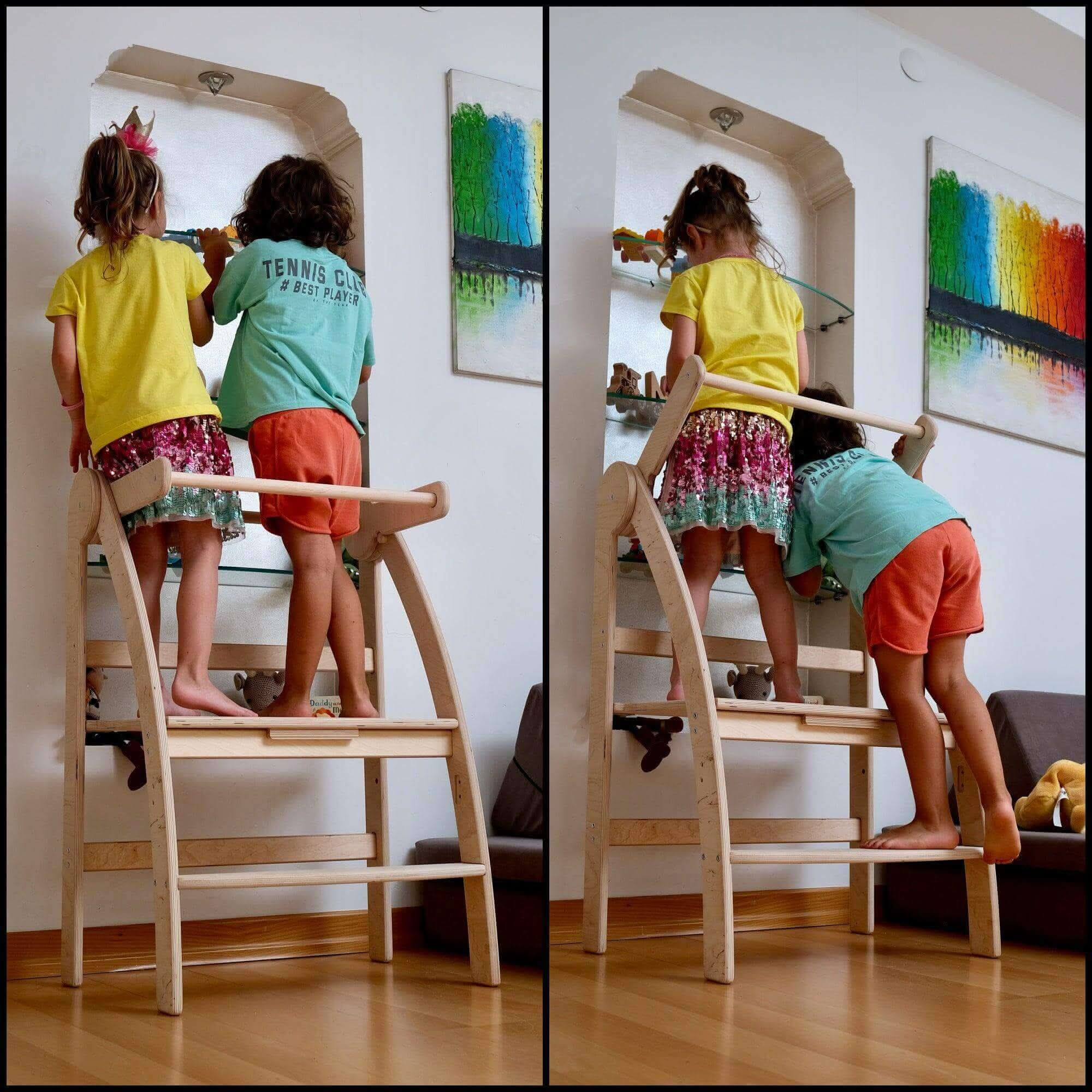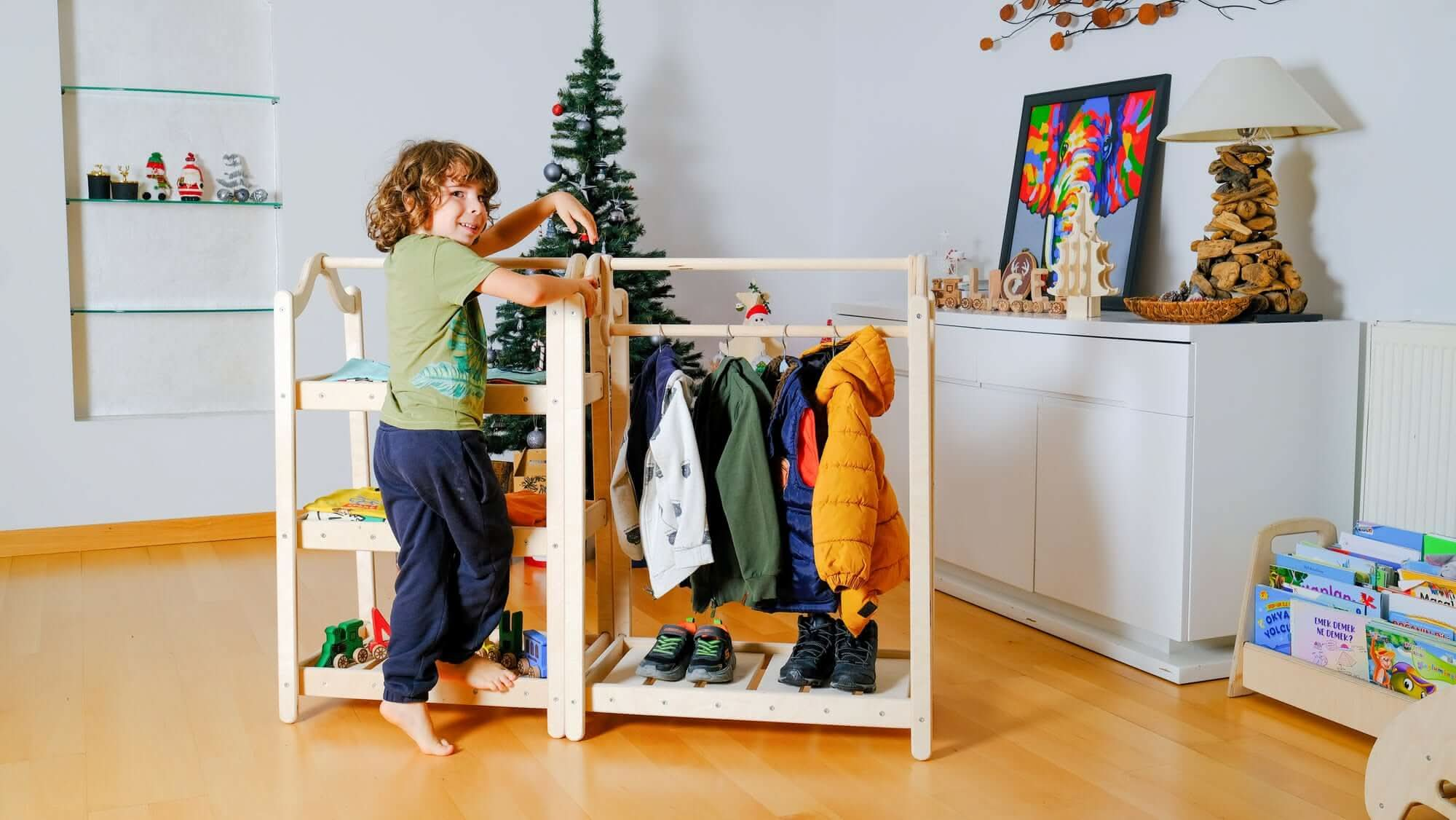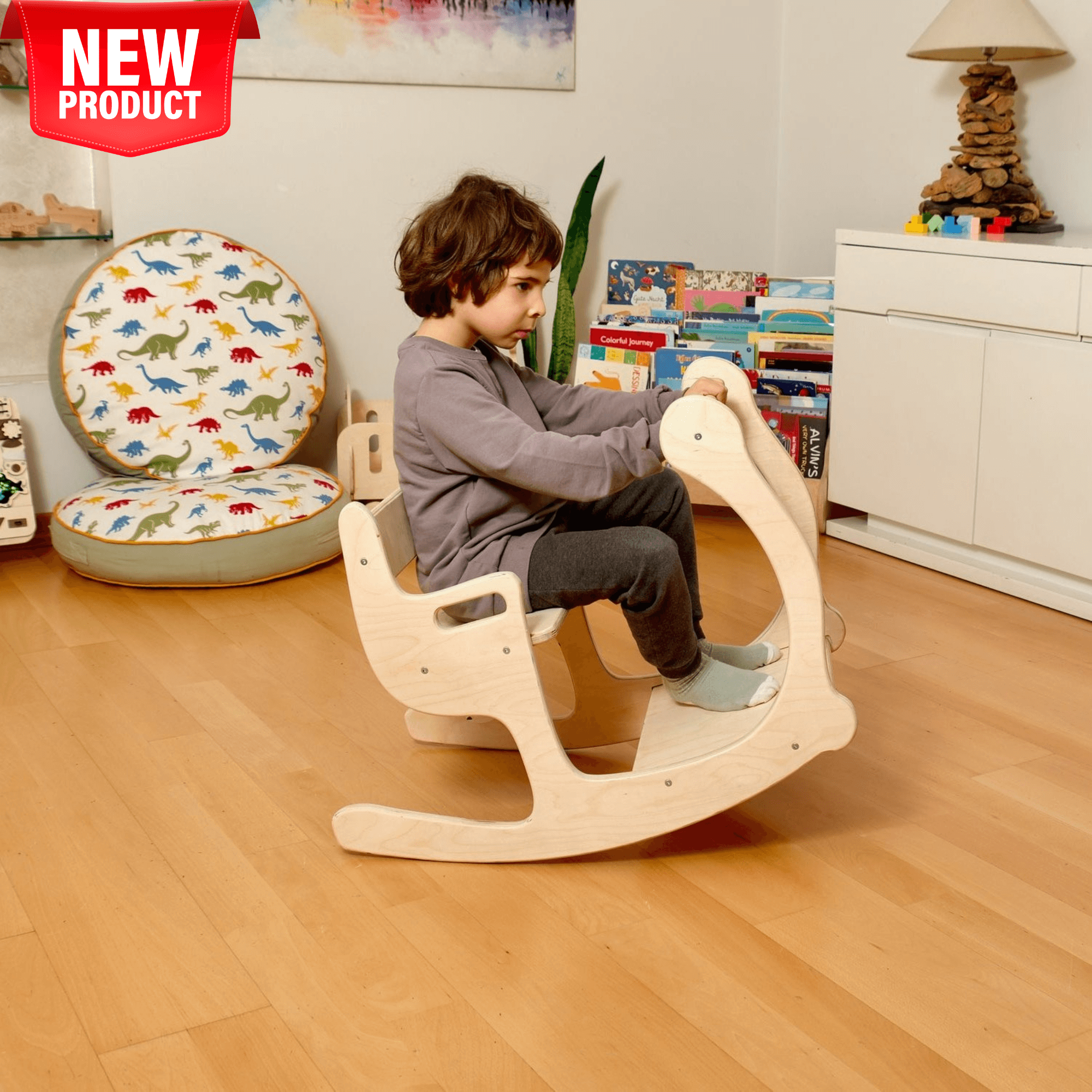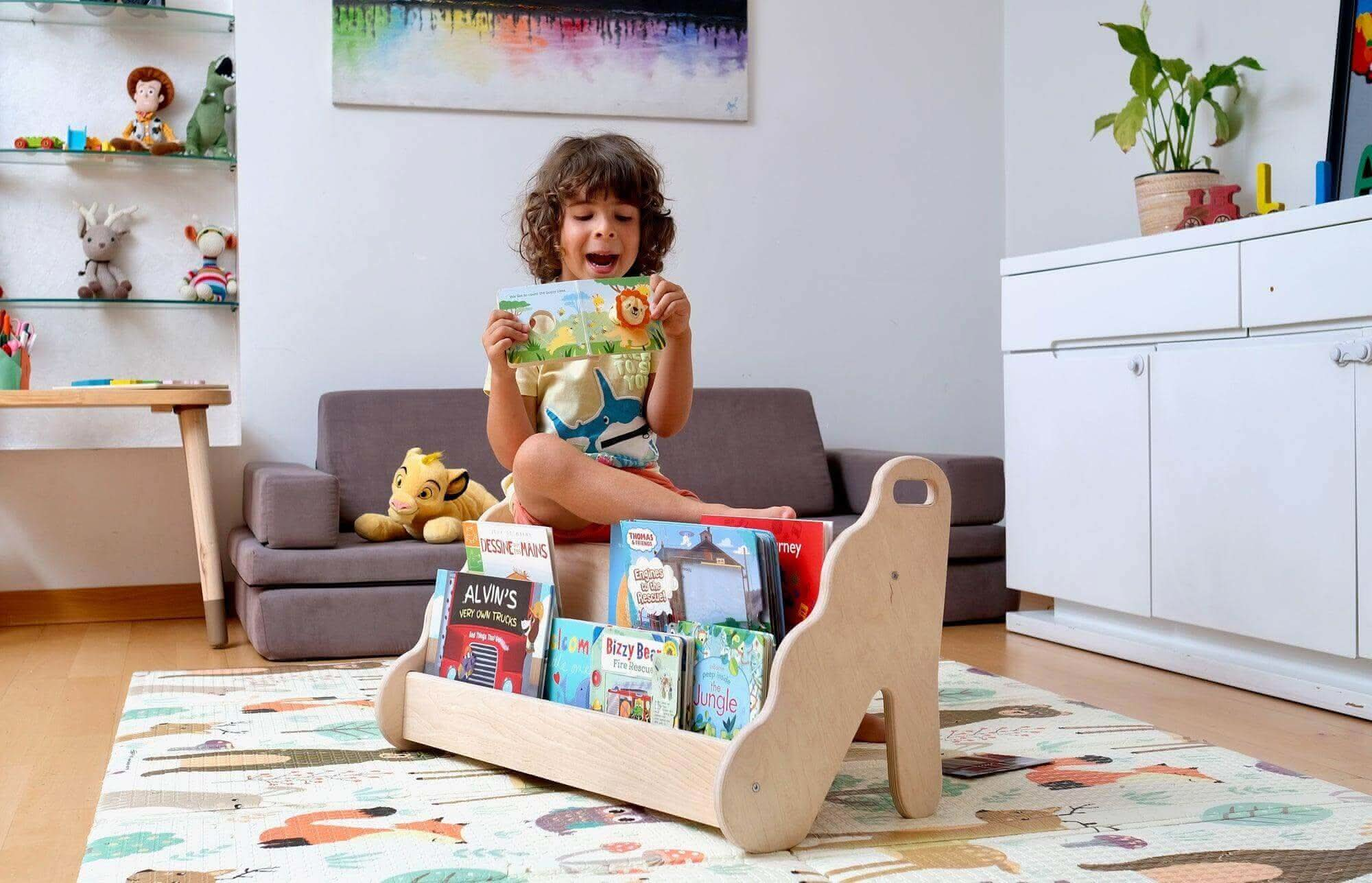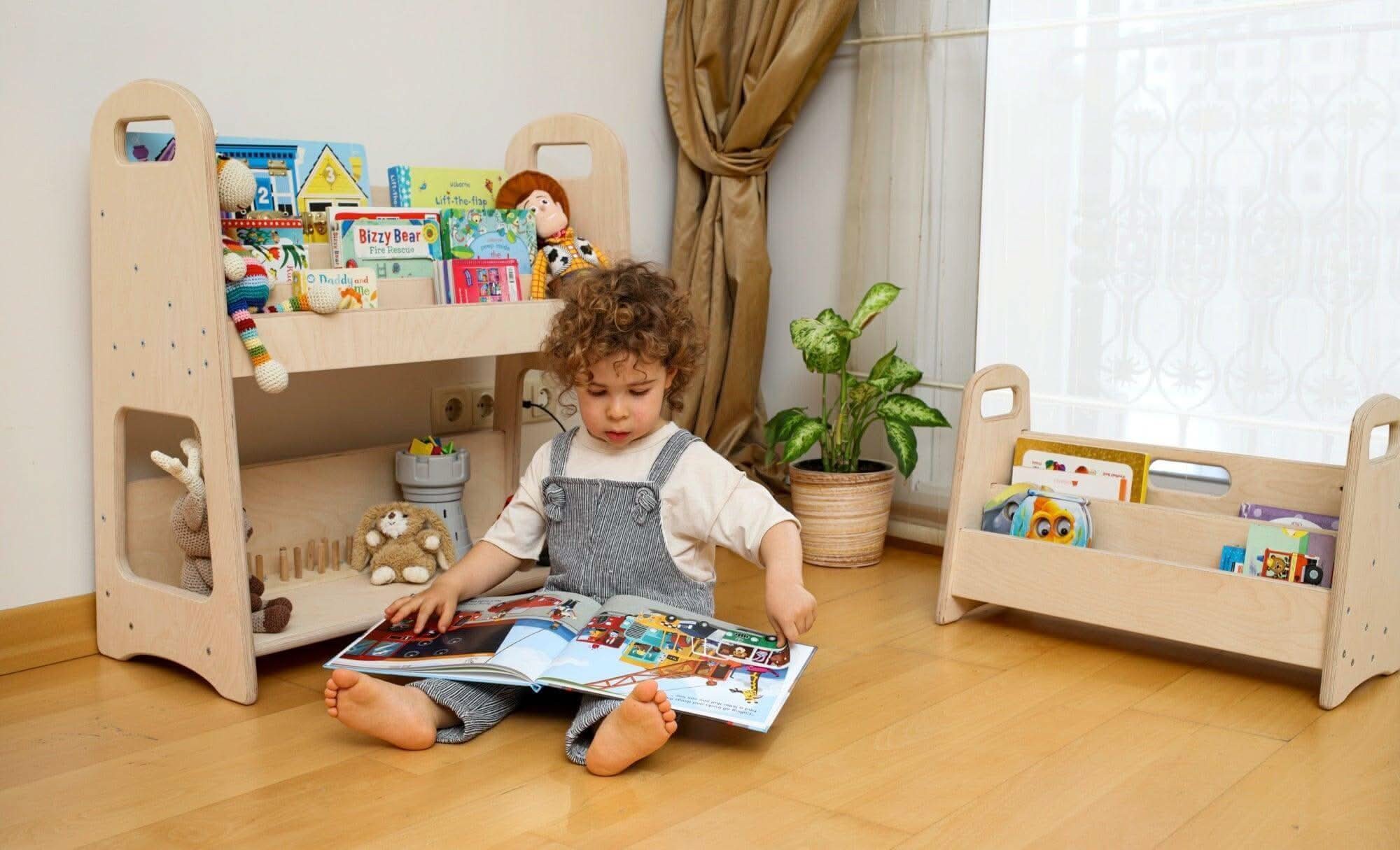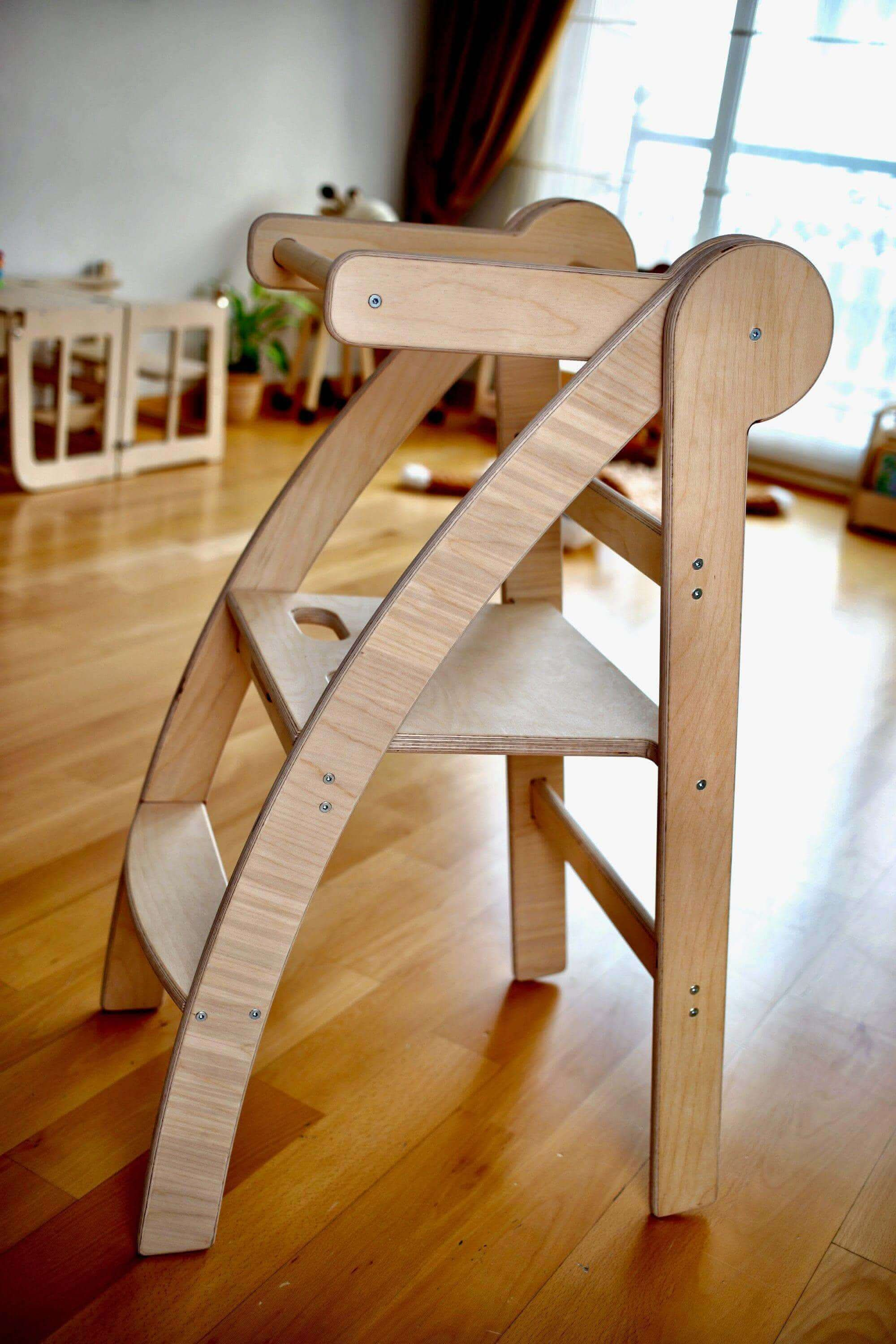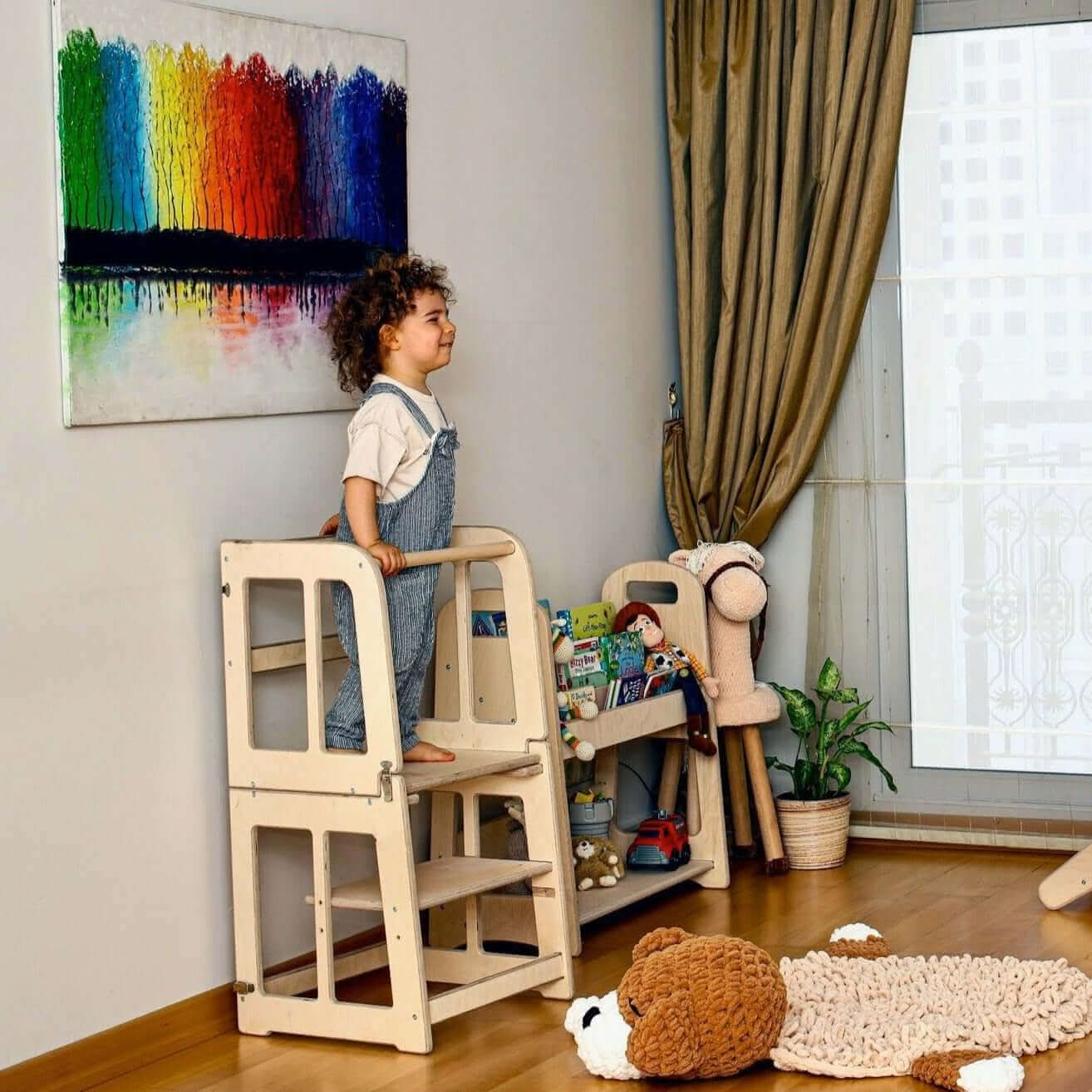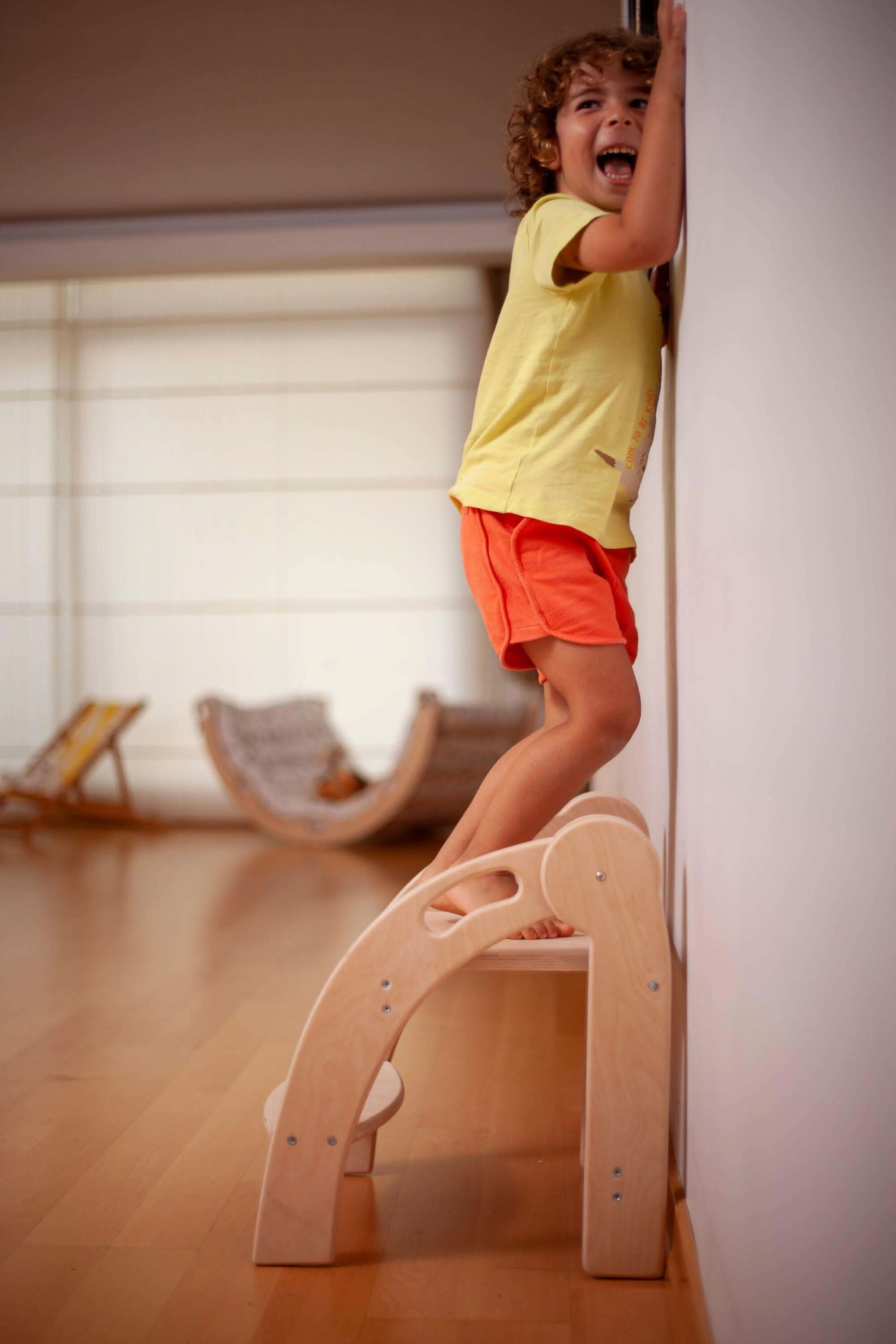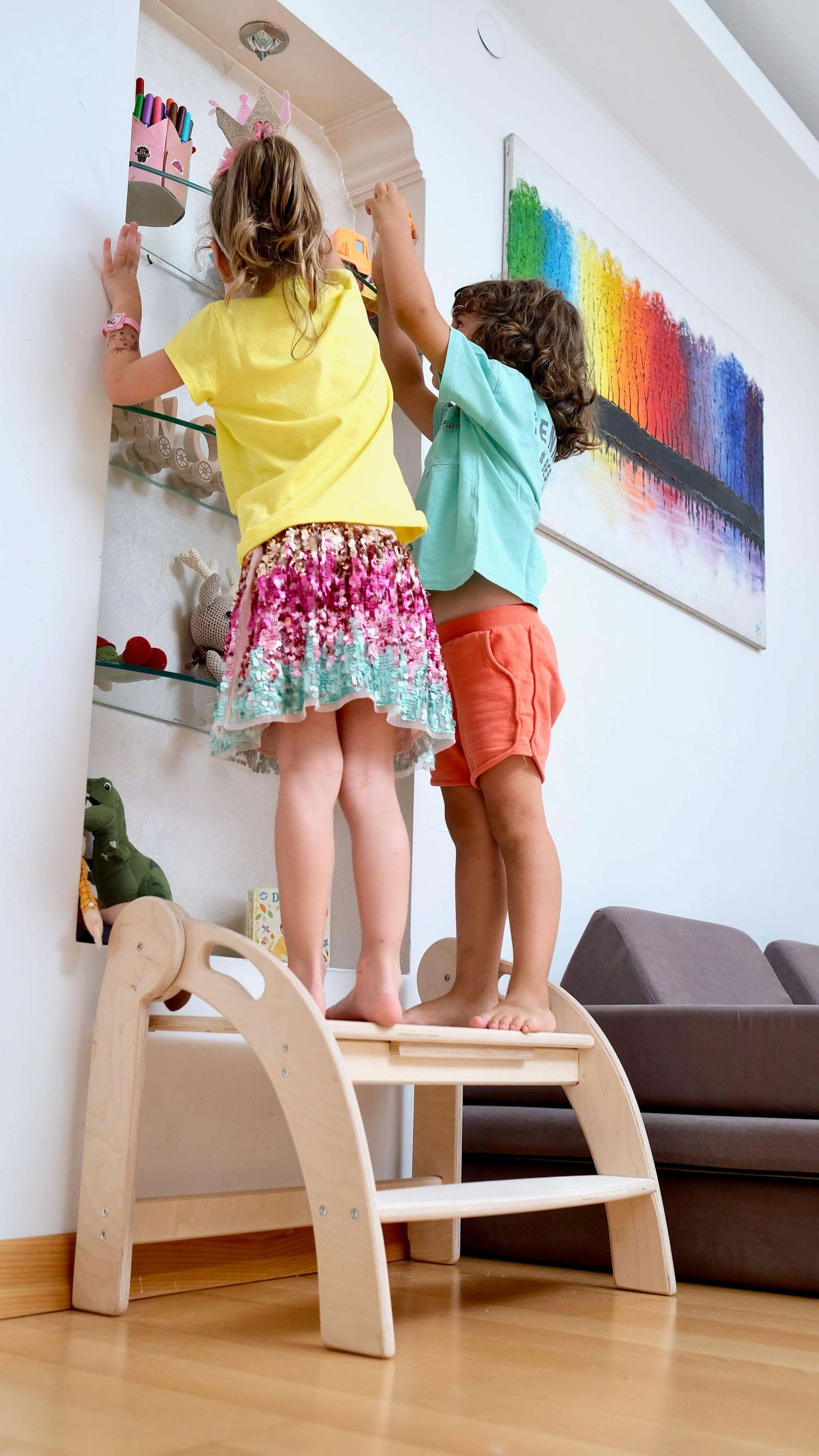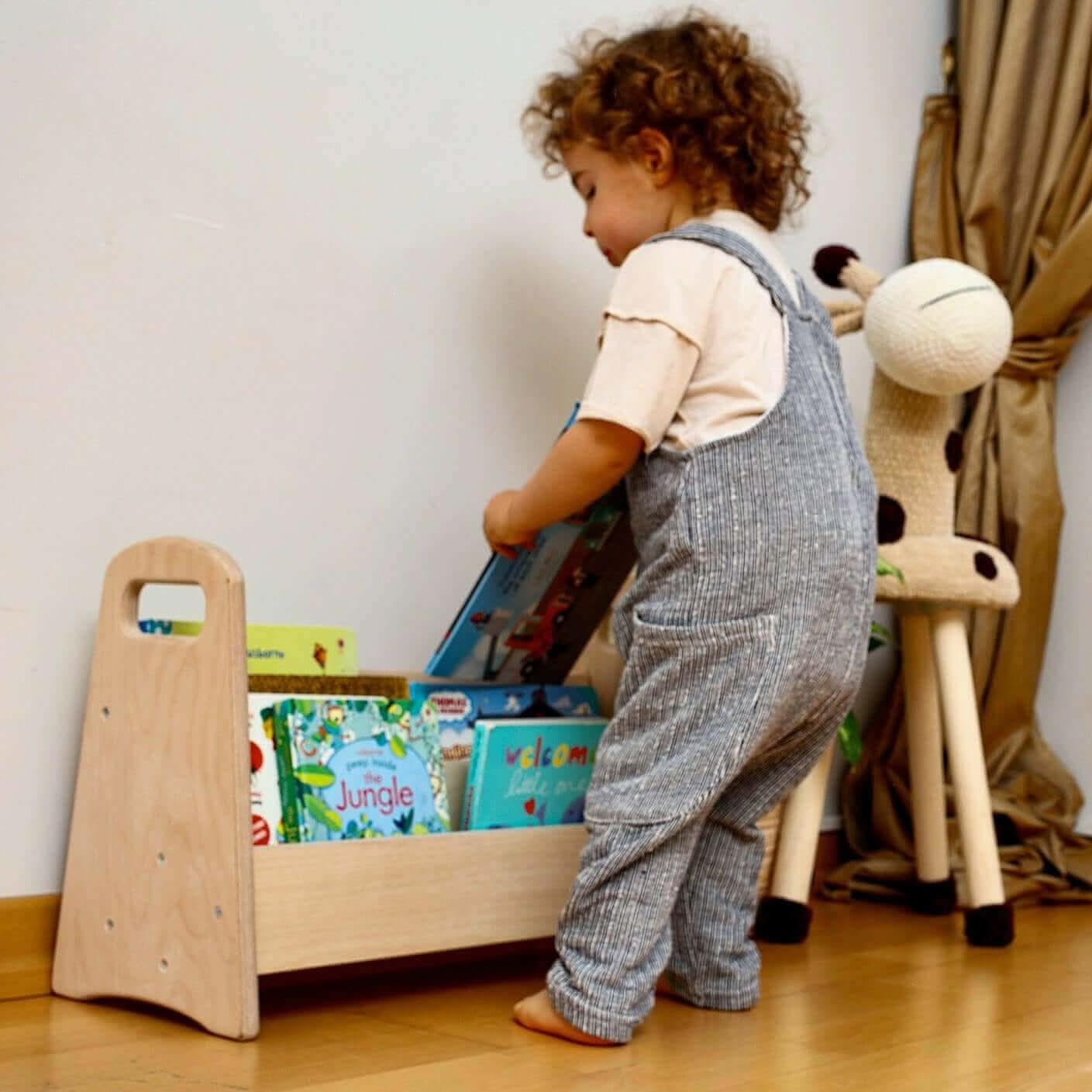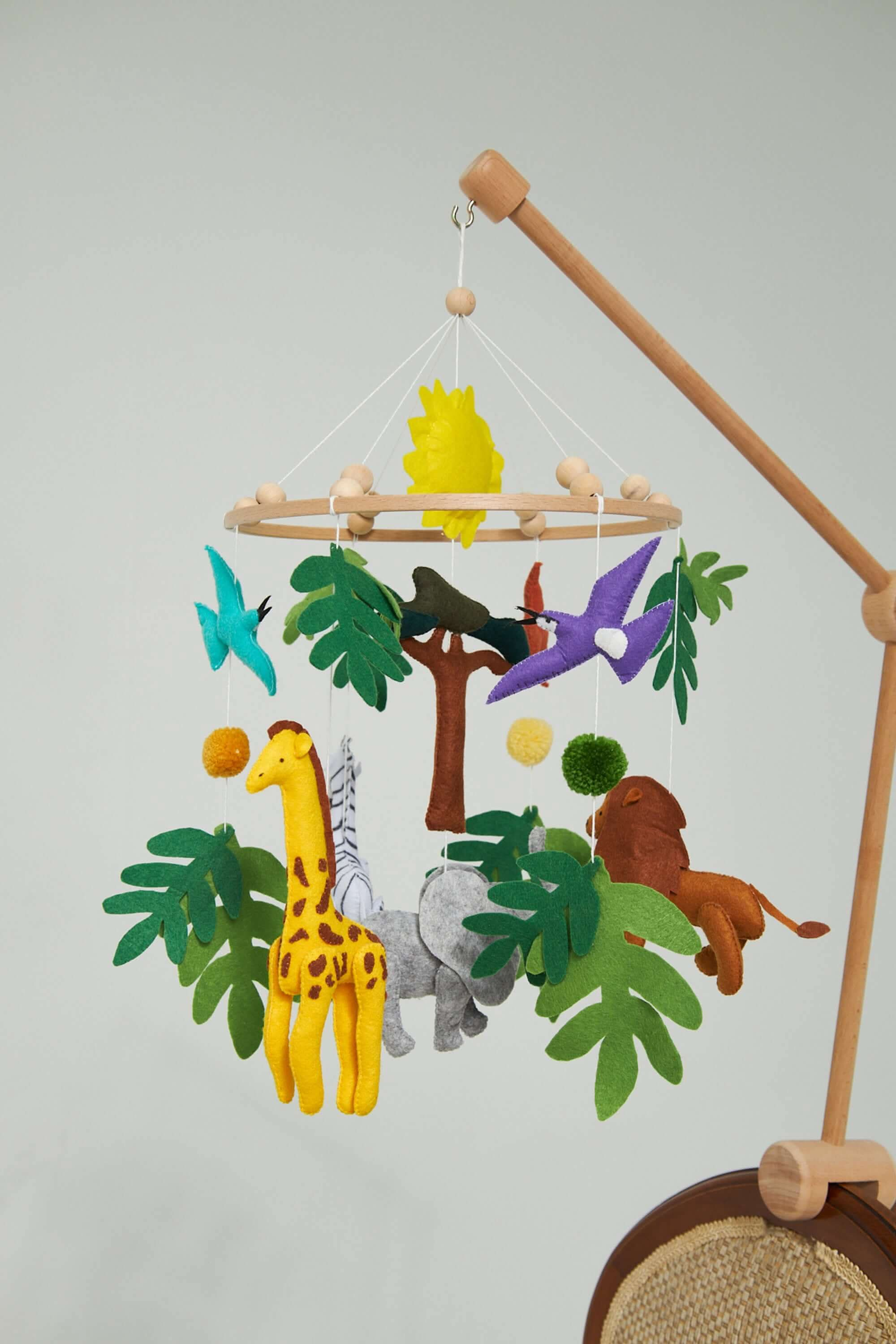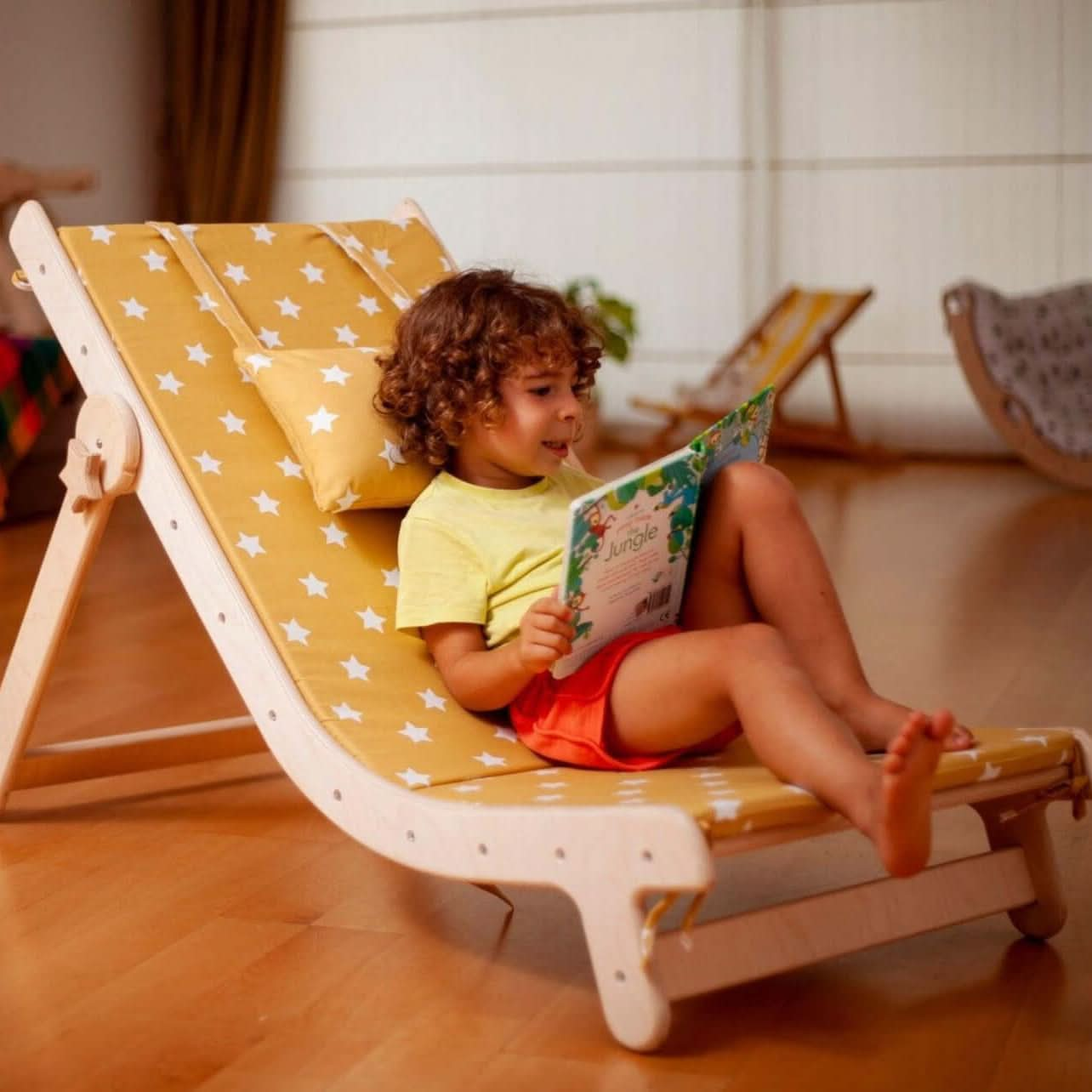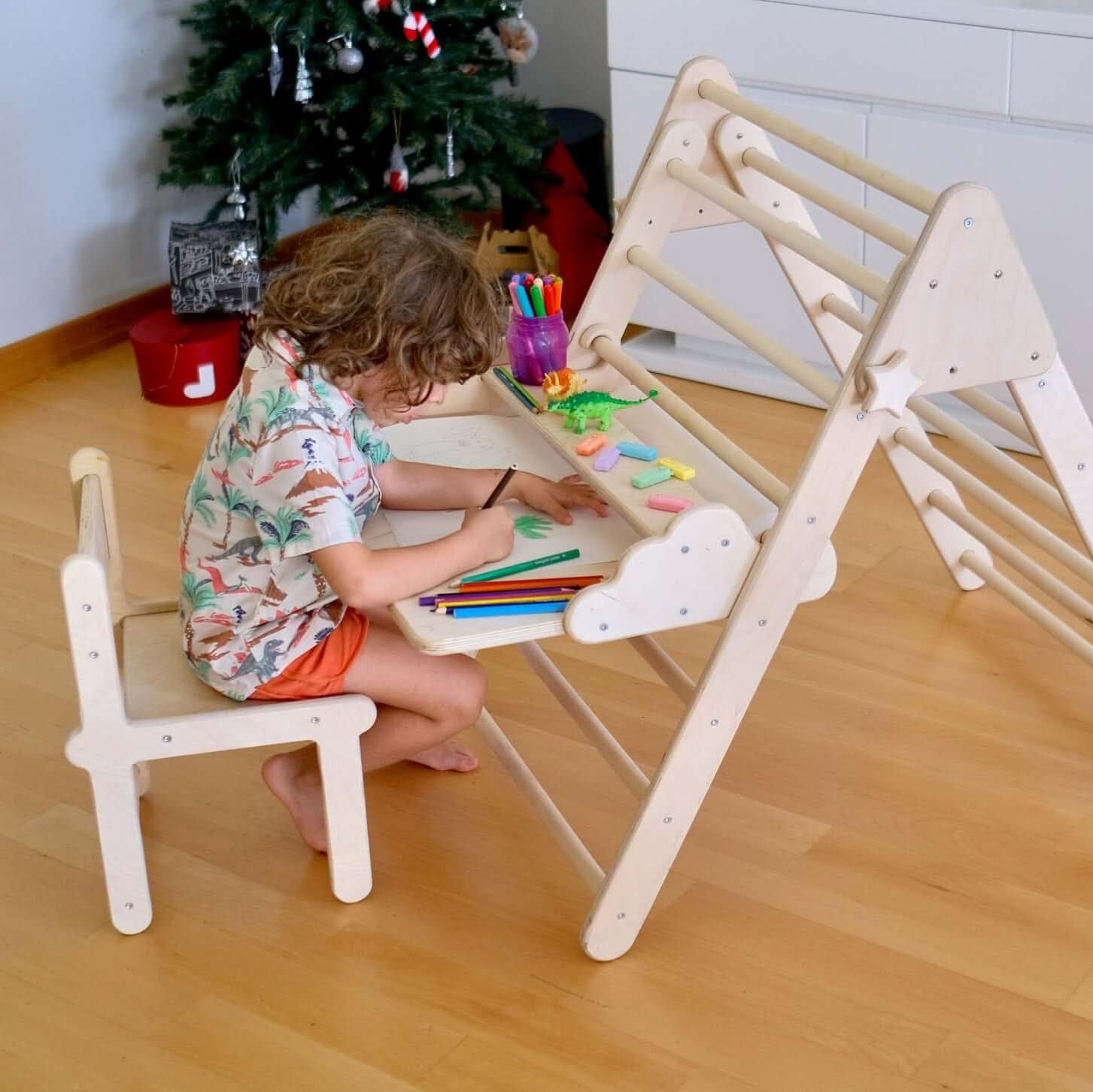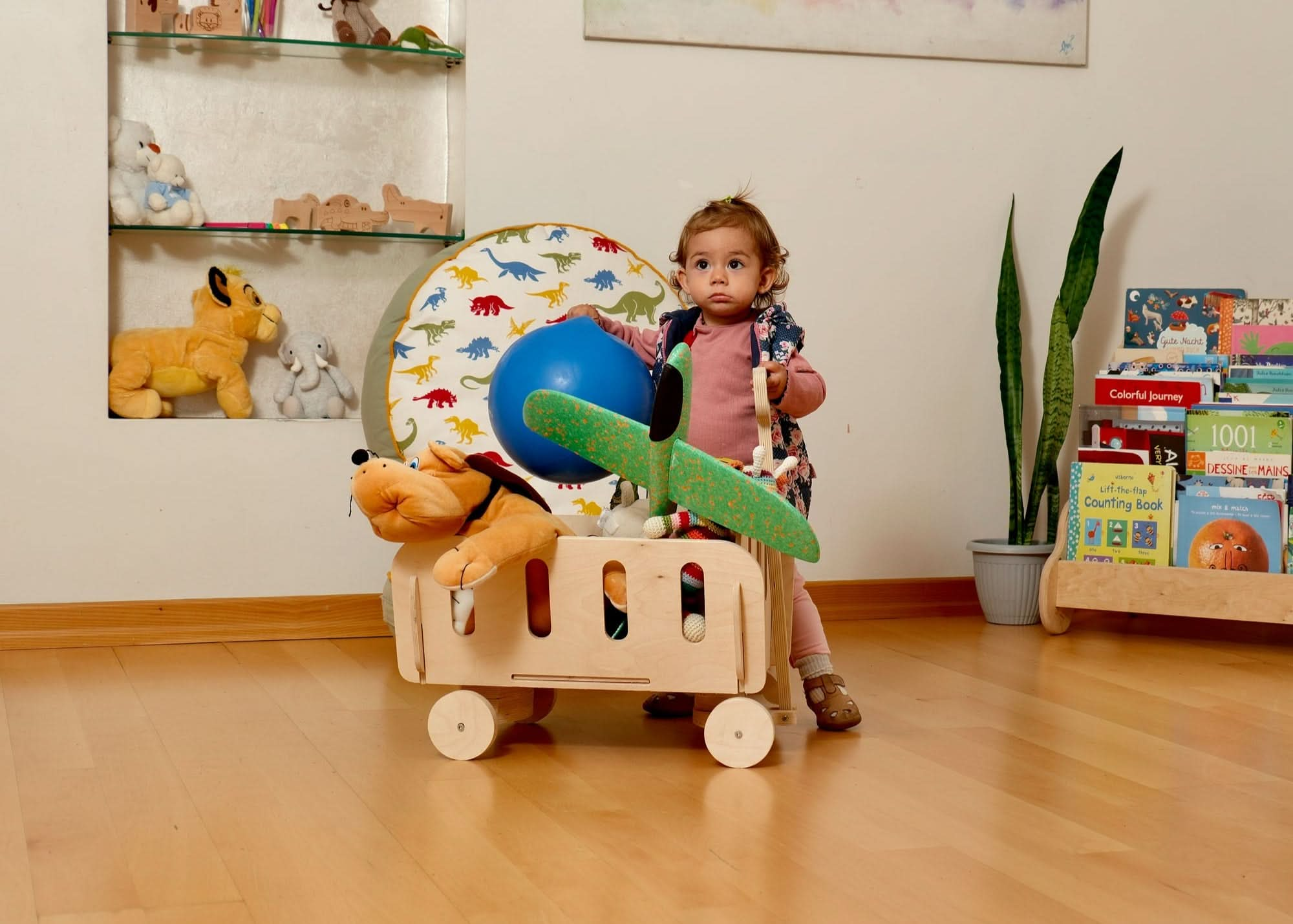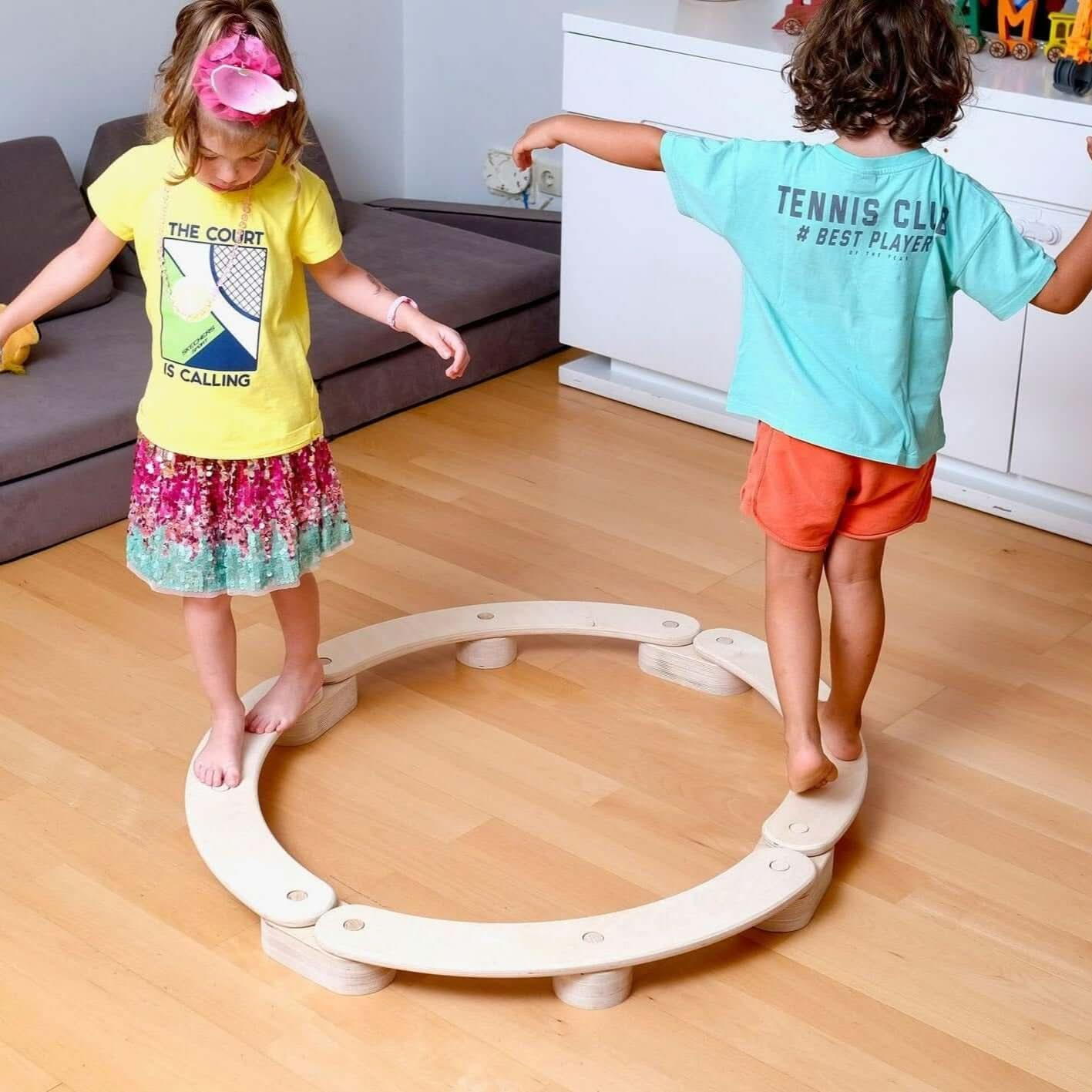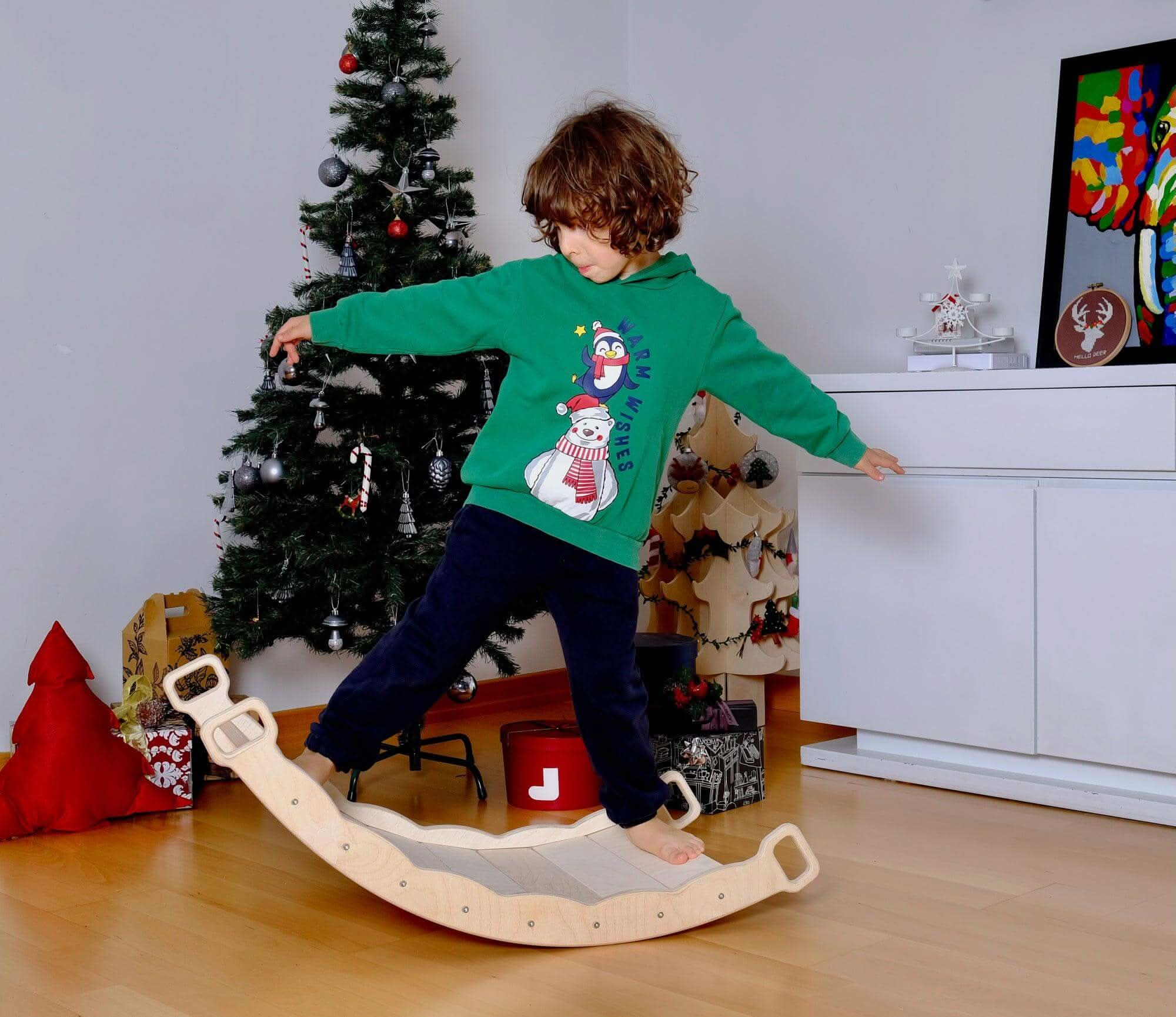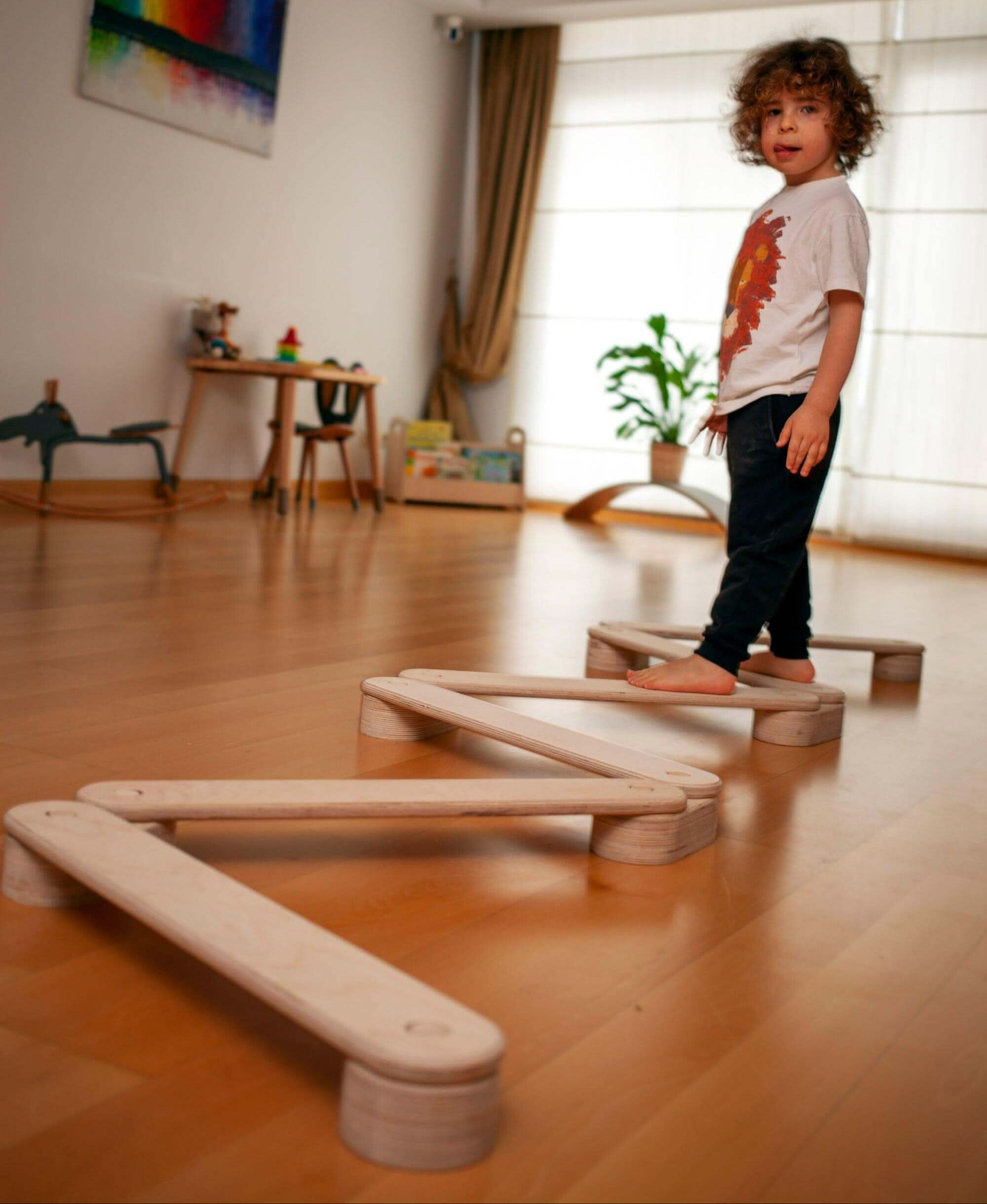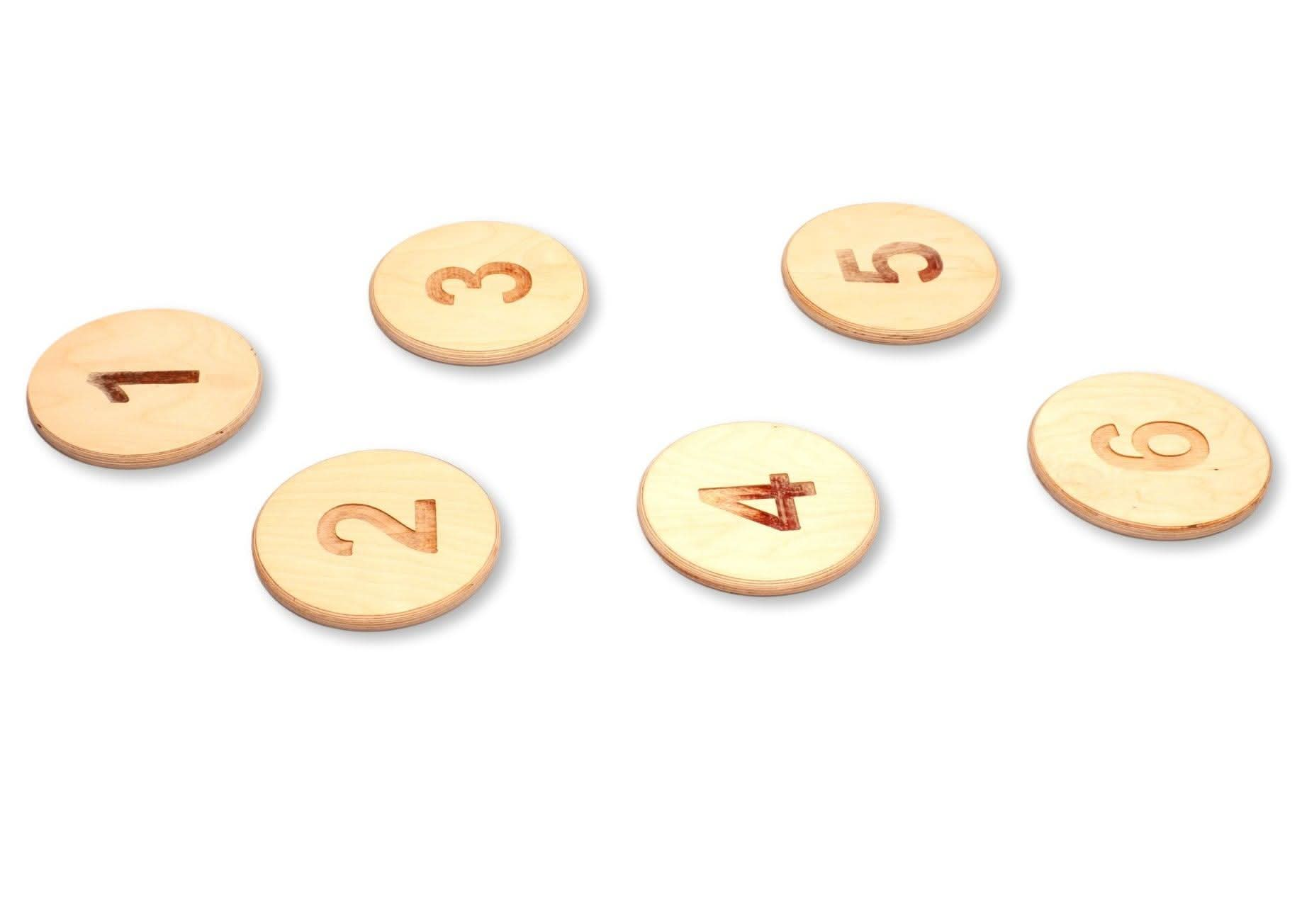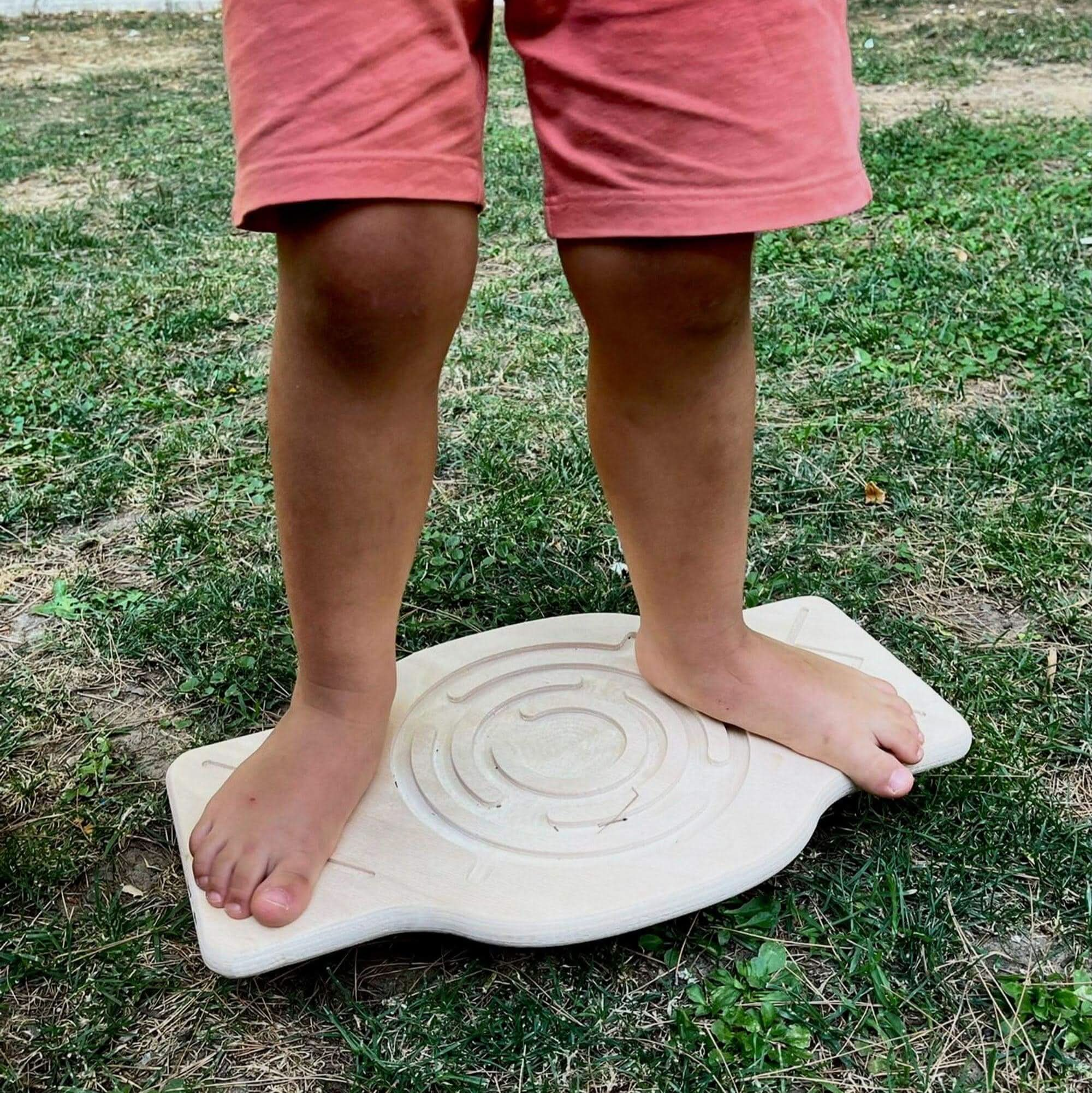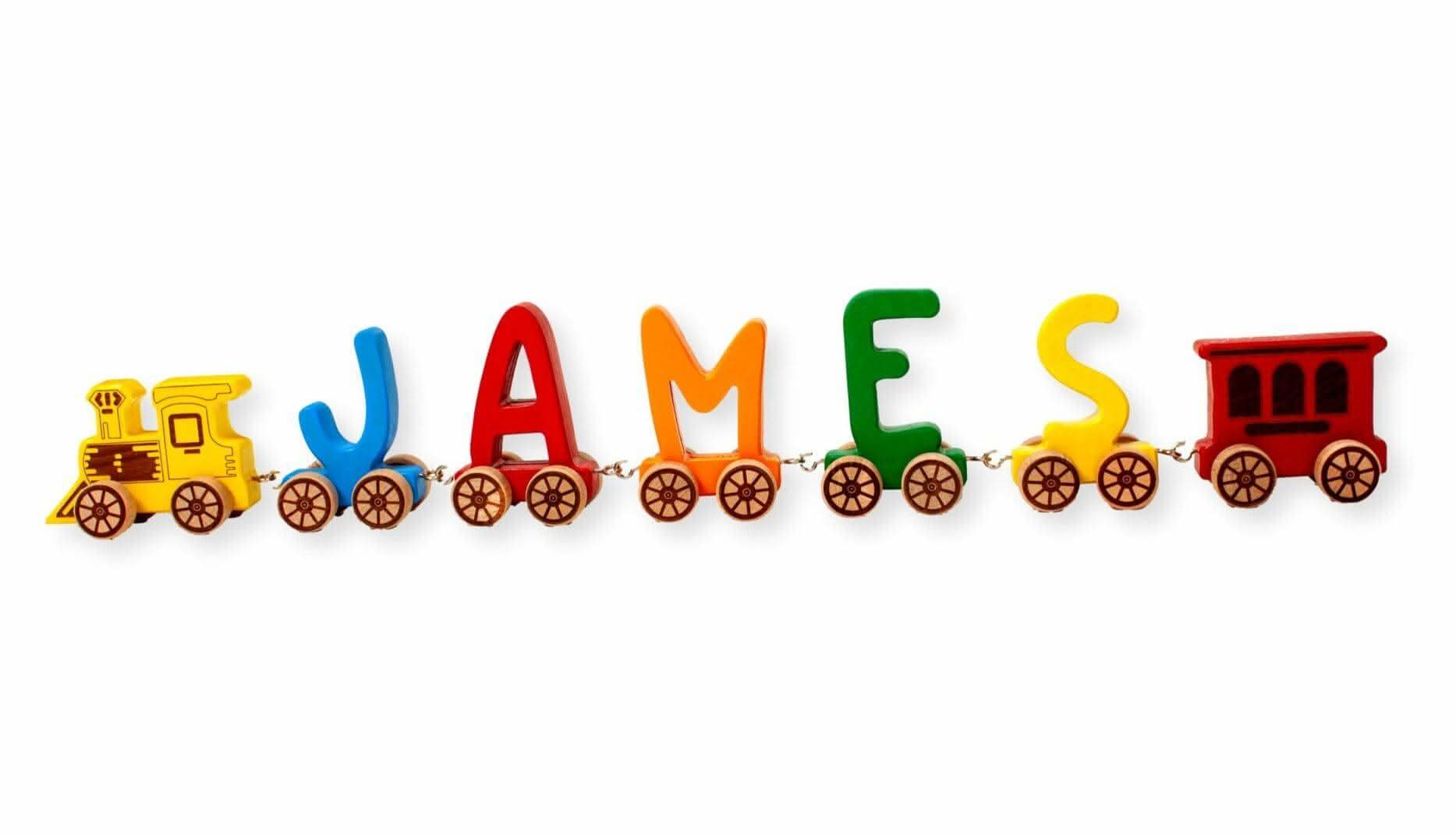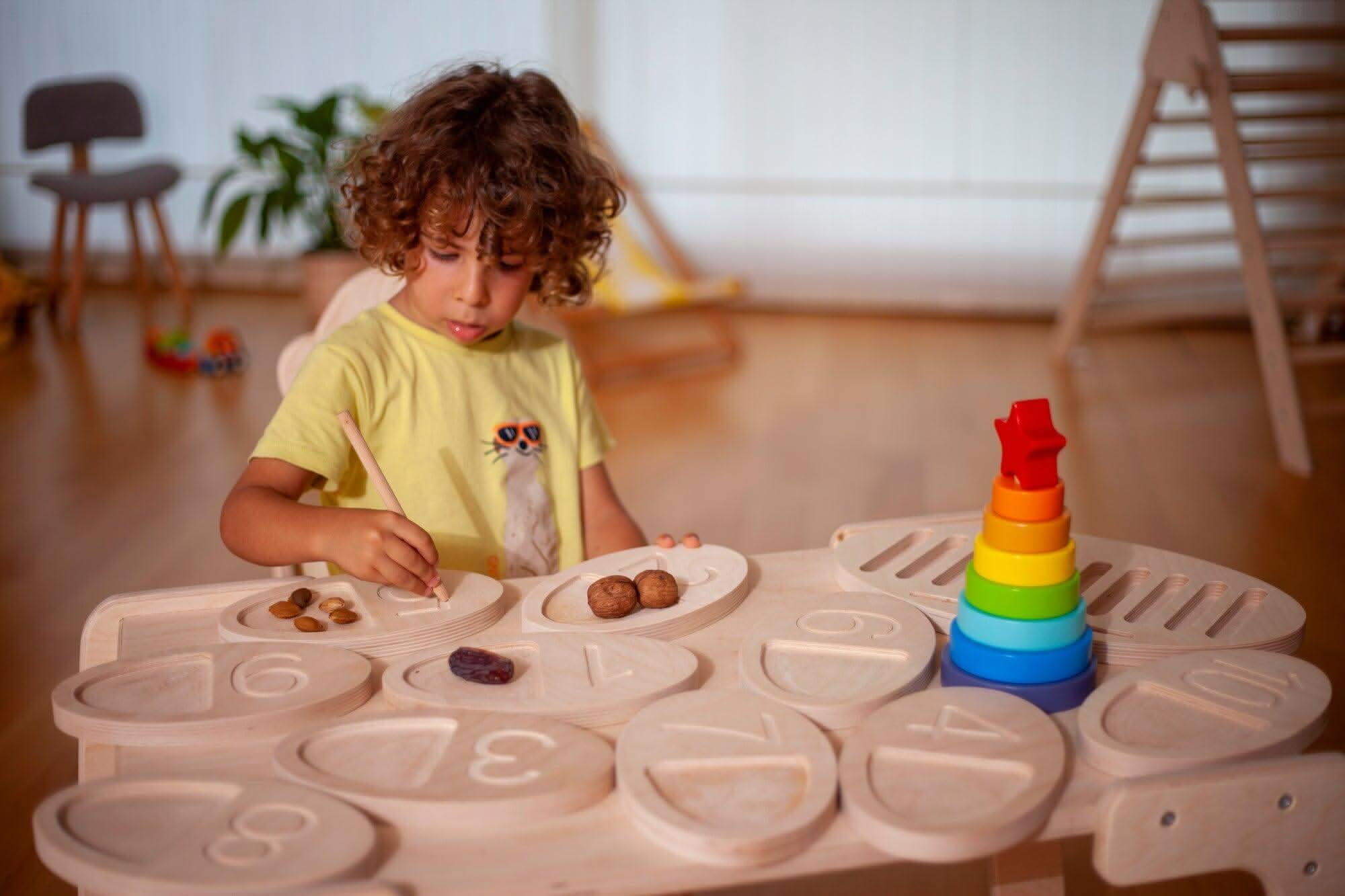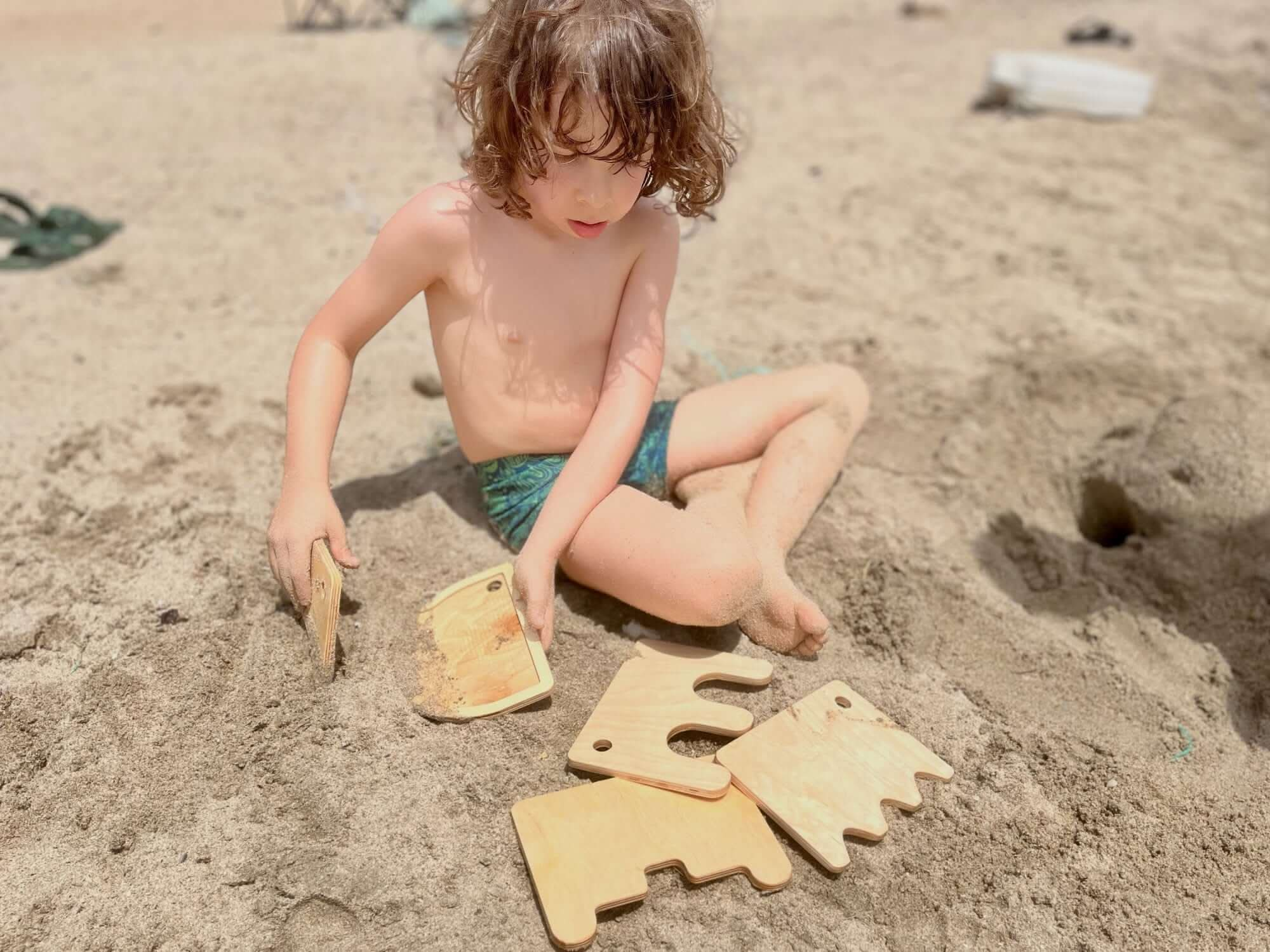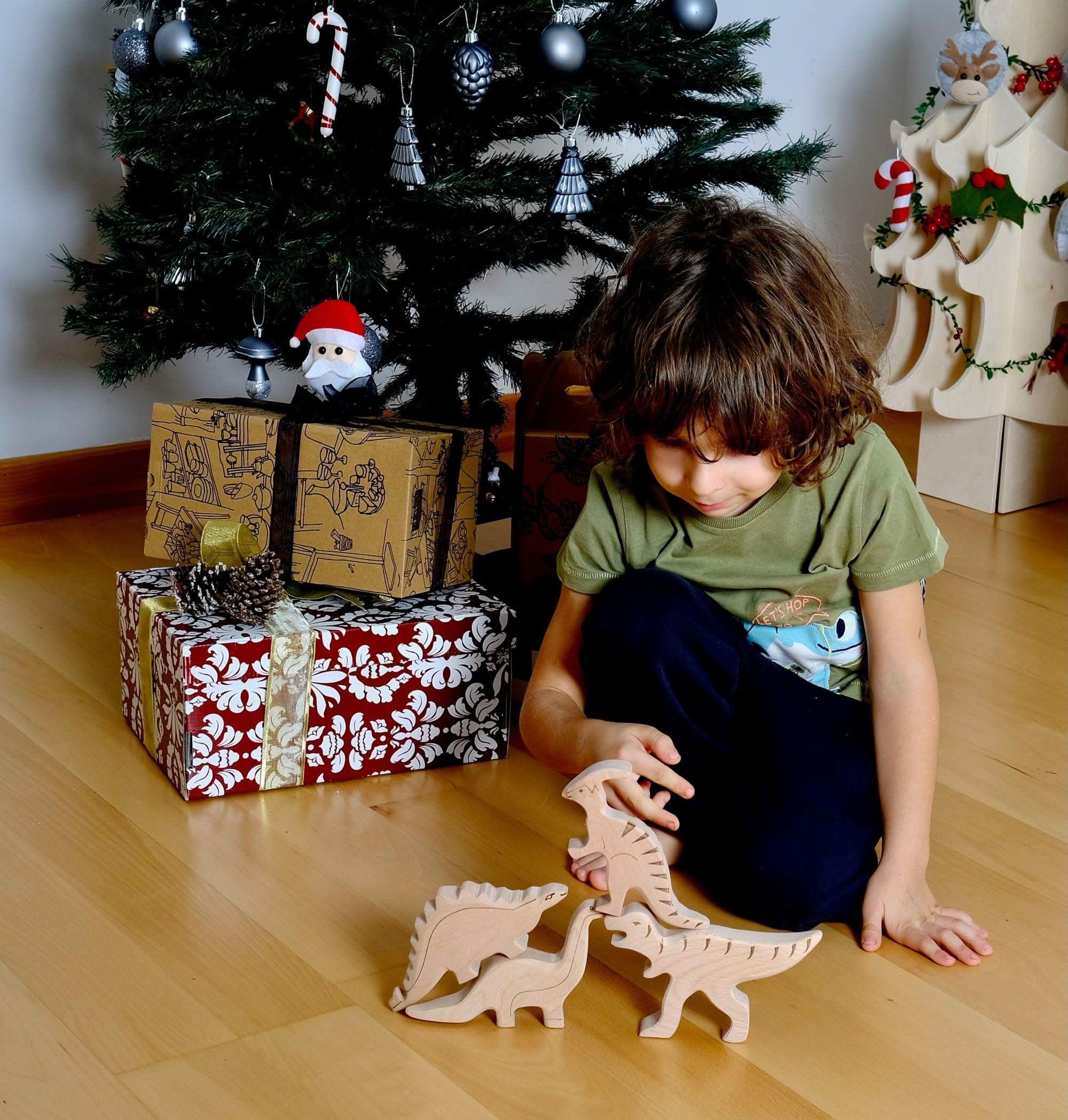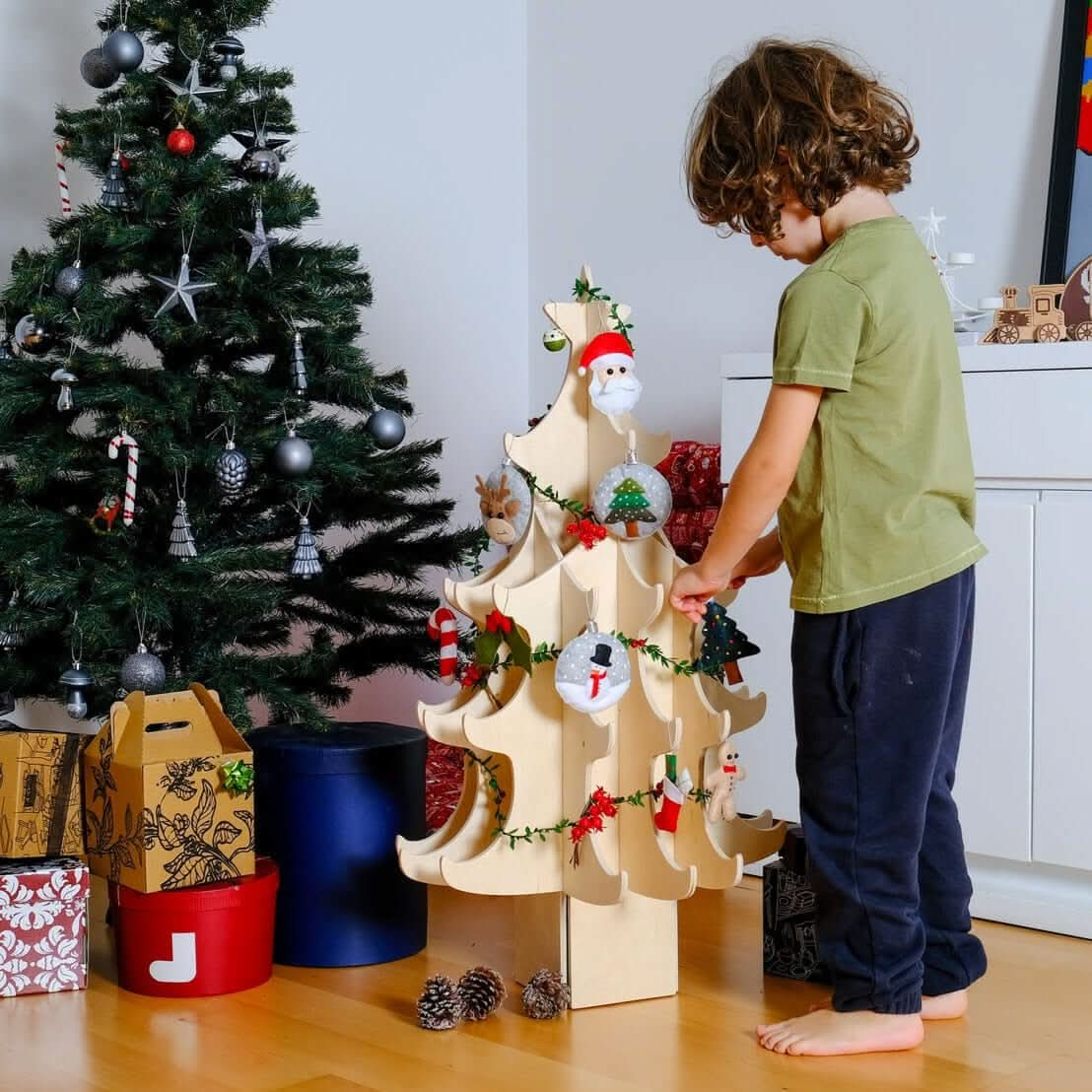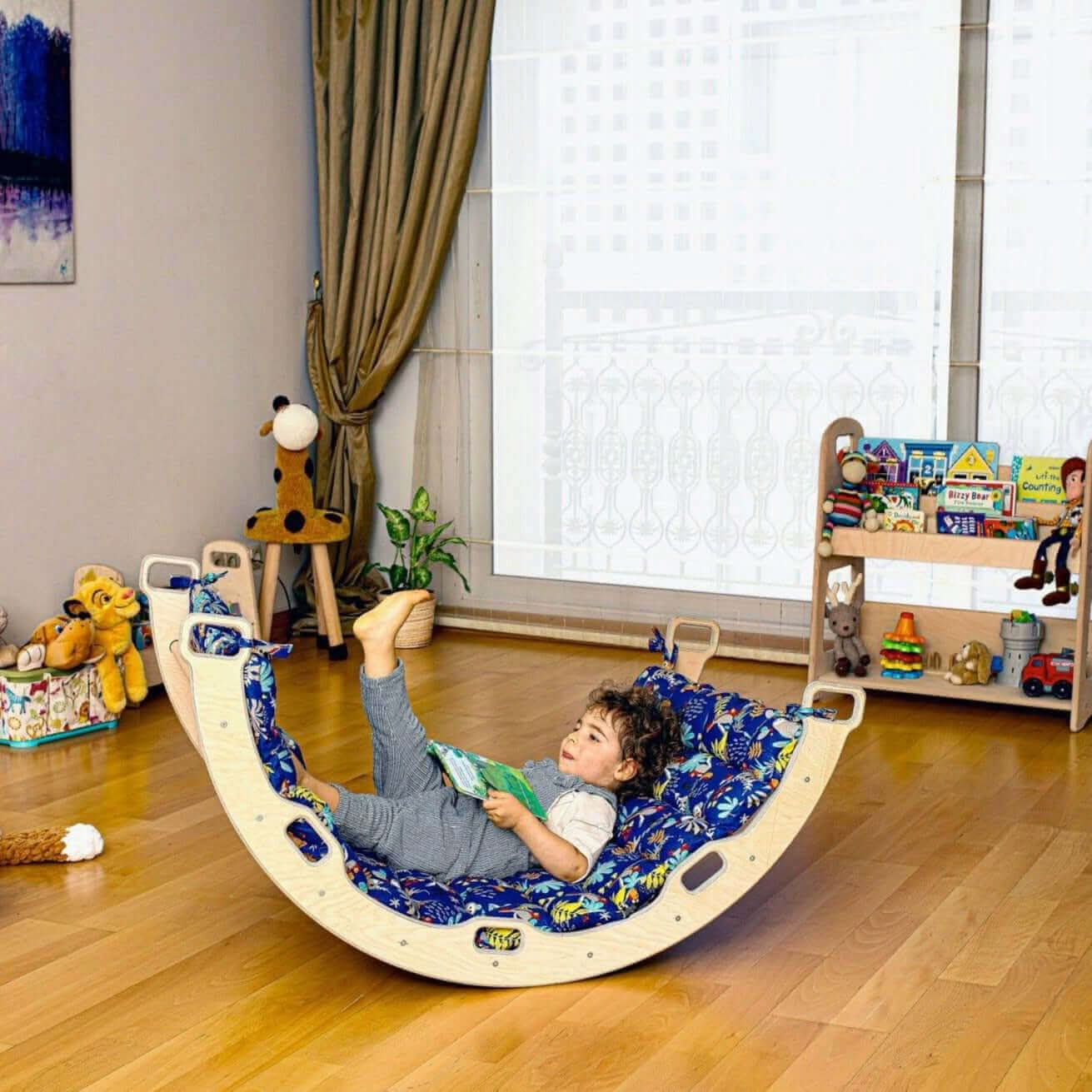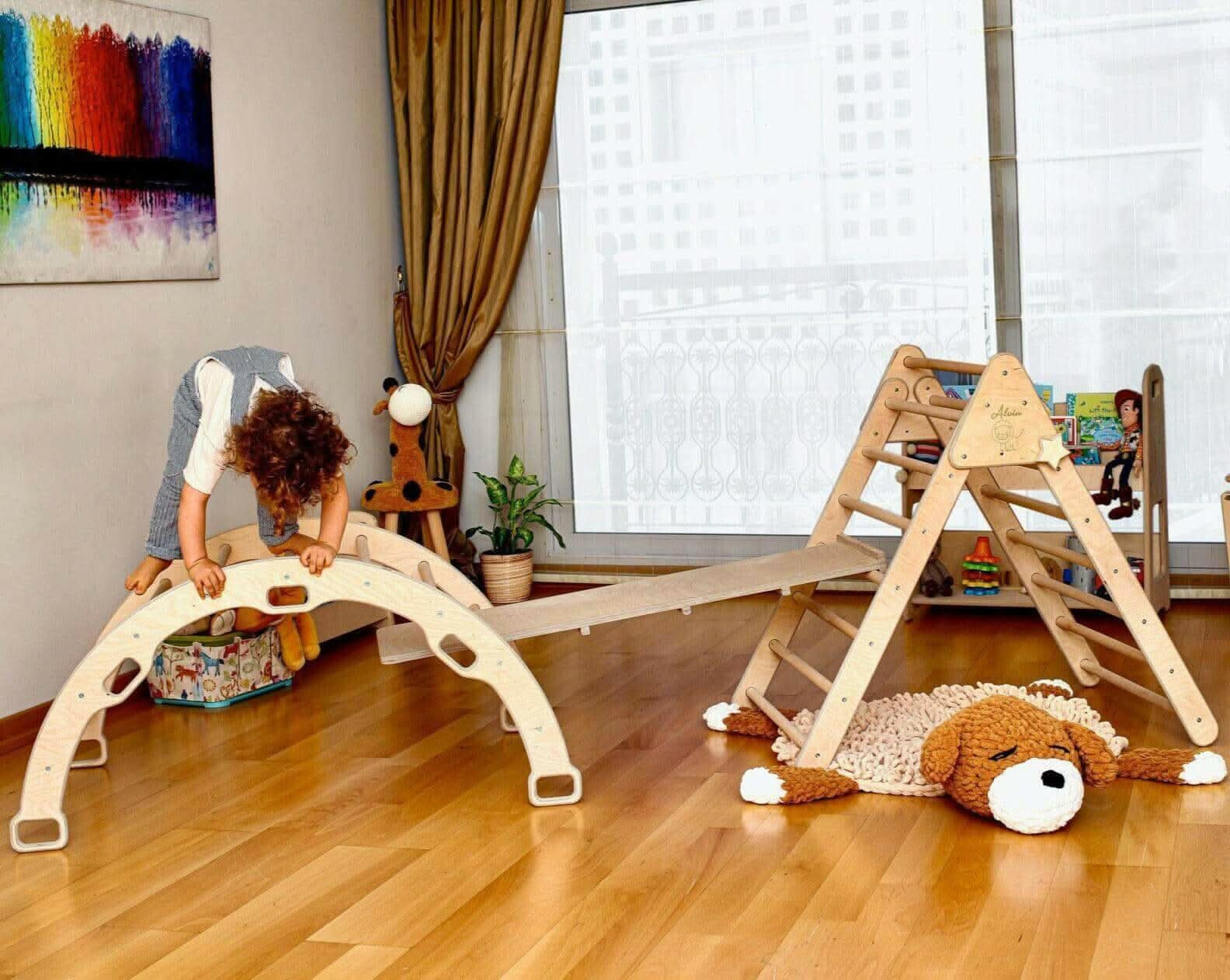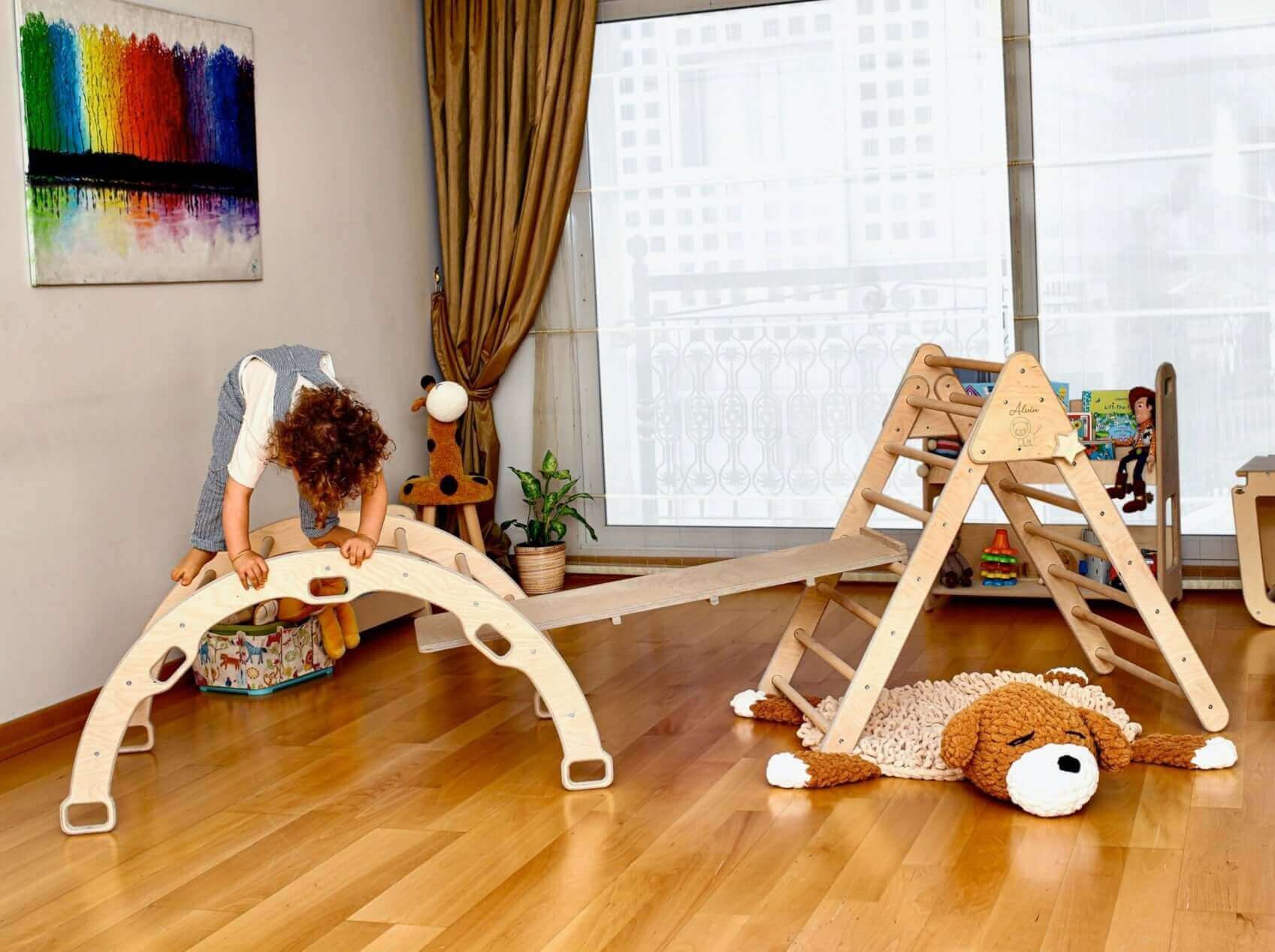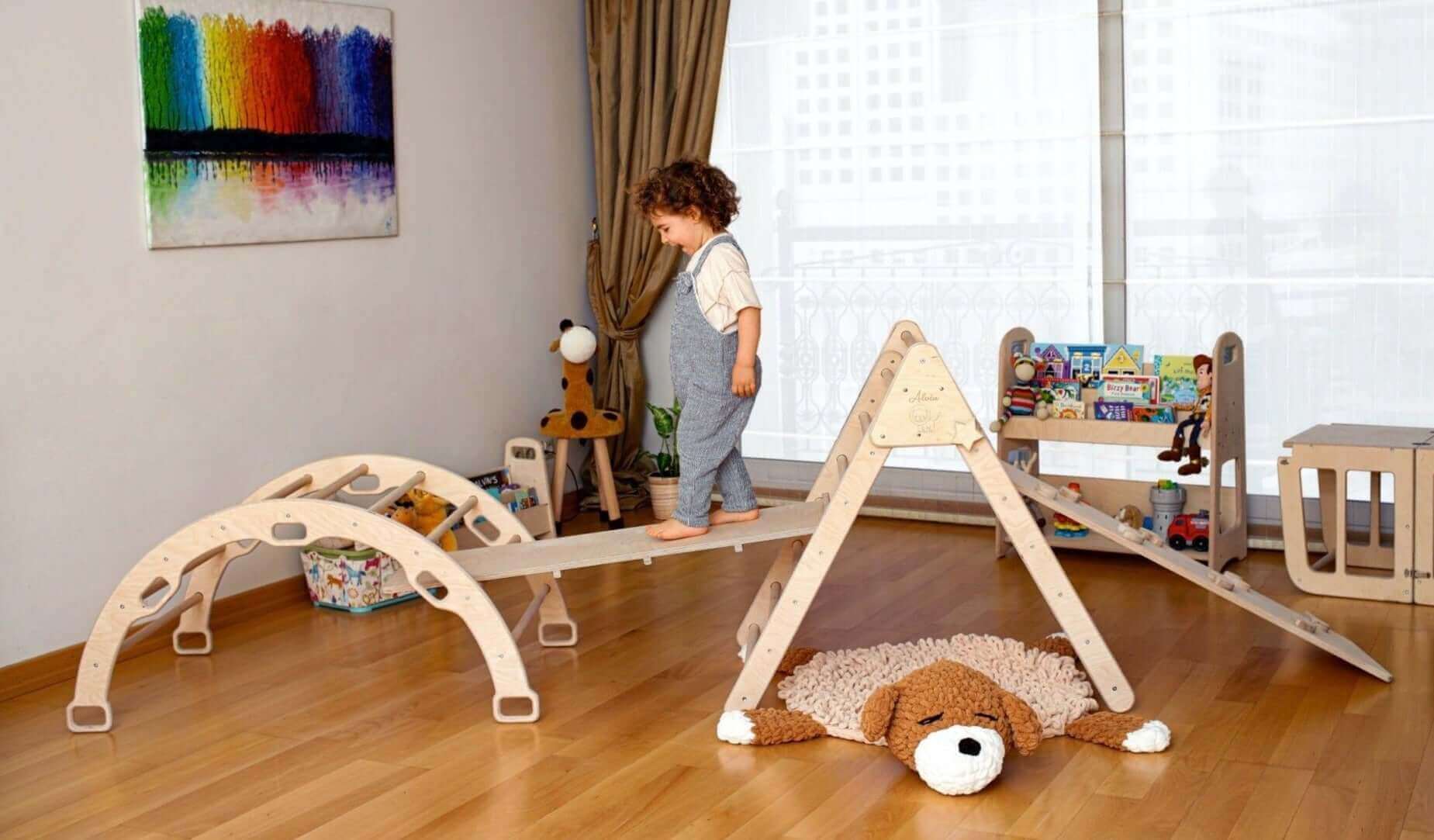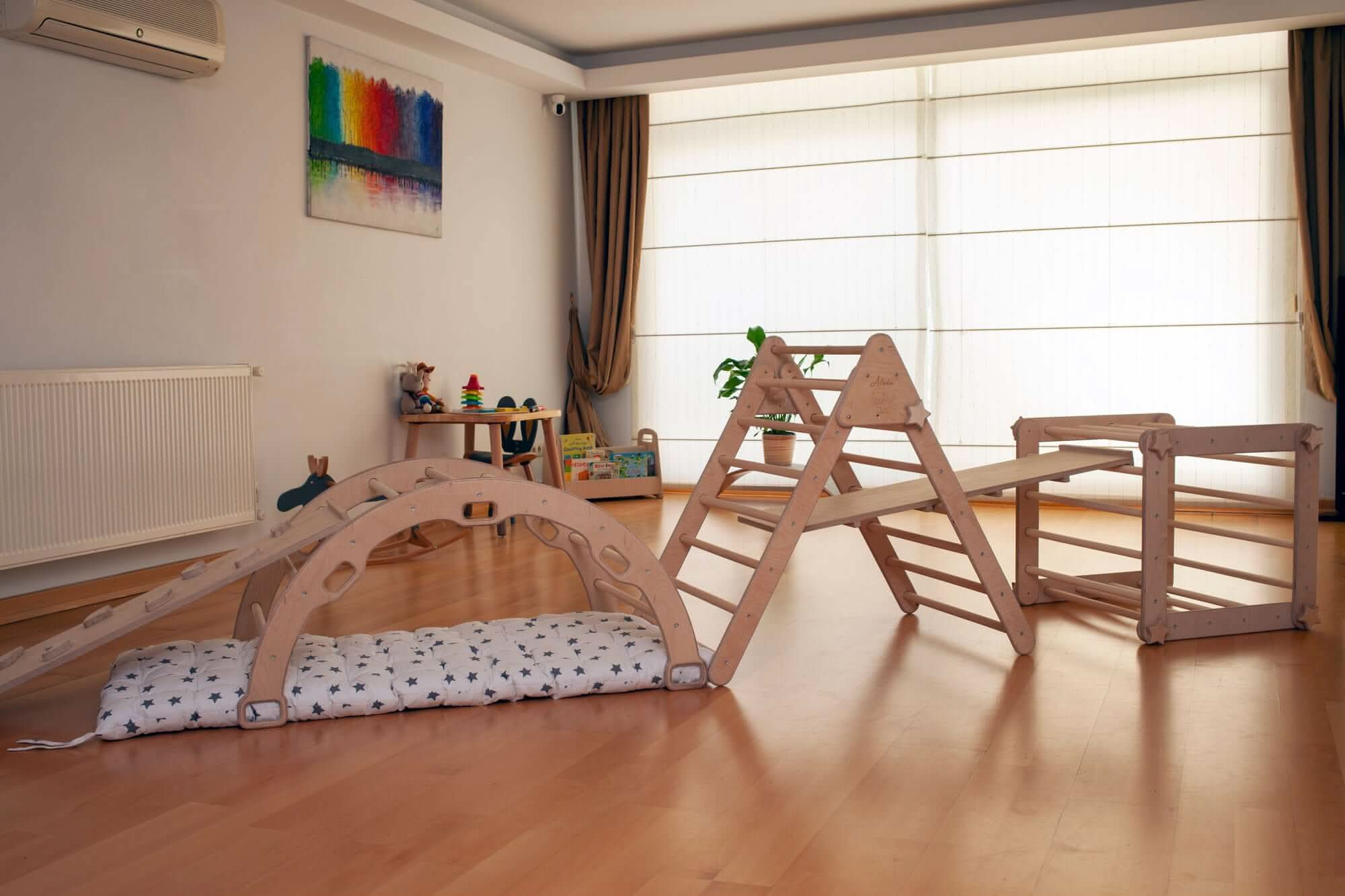
· By halit burak capraz
Safety Guide: Choosing the Right Learning Tower for Your Toddler
Introduction to Learning Towers
Definition of Learning Towers
So, what exactly are learning towers? Think of them as a superhero version of the traditional kids step stool, designed specifically for toddlers! These sturdy platforms allow little ones to safely reach higher surfaces, like kitchen counters or sinks, while engaging in activities alongside their caregivers. Often referred to as Montessori towers or kitchen helper stools, they empower children to explore their environment and participate in everyday tasks.
Purpose and Benefits for Toddlers
The purpose of a learning tower goes beyond just providing height; it's about fostering independence and confidence in your child. Here are some key benefits:
- Encourages Participation: Toddlers can join in on cooking or other activities, making them feel like part of the family.
- Boosts Confidence: As they climb and stand safely, kids develop self-assurance in their abilities.
- Enhances Motor Skills: Climbing up and down helps improve balance and coordination.
- Cognitive Development: Engaging with real-life tasks stimulates curiosity and problem-solving skills.
- Safety First: Unlike traditional stools, most learning towers come with safety features like railings to prevent falls.
The best rated toddler kitchen helpers on the market today!
This includes high-quality wooden towers that are eco-friendly and non-toxic. Safety is paramount!
Overview of Montessori Principles Related to Learning Towers
The Montessori approach emphasizes hands-on learning and independence. Learning towers align perfectly with these principles by allowing toddlers to:
- Explore Freely: Children can safely experiment with their surroundings without constant adult intervention.
- Cultivate Practical Life Skills: From cooking to cleaning, learning towers enable kids to learn essential life skills early on.
- Create a Sense of Belonging: By participating in family activities, children feel valued and connected.
A well-designed adjustable learning tower, especially one that is foldable or portable, can be a game-changer for families looking to maximize space while ensuring safety. Plus, they’re typically easy to clean-bonus!
If you're considering adding a learning tower to your home, remember that it’s not just about height; it’s about creating an enriching environment where your child can thrive. After all, who wouldn't want their little one becoming the next master chef (or at least the next great pancake flipper)?
Key Features to Consider When Choosing a Learning Tower
Safety Features
When it comes to learning towers, safety should be your top priority. Look for features like:
- Railings: These are essential to keep your little explorer secure while they stand and reach.
- Non-slip surfaces: Ensure the base has a grip to prevent any accidental slips.
- Sturdy construction: A solid frame is non-negotiable; you want something that can withstand the enthusiastic movements of toddlers.
Stability and Sturdiness
A wobbly tower is a recipe for disaster. Opt for a sturdy kitchen helper for kids, which provides a stable platform. Consider models that have a wider base or additional support legs to enhance stability.
Material Quality (Non-toxic, Durable)
The material matters! Choose high-quality wooden towers for toddlers that are not only durable but also eco-friendly. Look for non-toxic finishes, ensuring safe playtime without harmful chemicals.
Edge Protection and Design Considerations
Smooth edges are crucial in preventing accidents. A well-designed toddler step stool with railings should have rounded corners and protective barriers to minimize the risk of bumps and bruises. Plus, aesthetically pleasing designs can blend seamlessly with your home decor!
Height and Adjustability
Your learning tower should grow with your child! Look for an adjustable learning tower, which allows you to change the height as your toddler grows. Not only does this extend the lifespan of the product, but it also ensures that your little one can safely reach those cookie-making heights!
Weight Capacity and Age Recommendations
This is where things get serious-check the weight capacity! Most towers are designed for children up to 6 years old, but always verify this before purchasing. Make sure it’s suitable for your toddler's weight and size to ensure maximum safety during use.
Ease of Use for Both Toddlers and Parents
A great learning tower isn't just about safety; it should also be user-friendly! Features like:
- Easy assembly: No one wants to spend hours deciphering instructions!
- Simplified access: Ensure your toddler can easily climb in and out without assistance.
- Cleans easily: Spills happen; choose an easy to clean learning tower for toddlers.
- Portability: If you need a foldable learning tower, make sure it's lightweight enough for easy movement around the house.
The right features make all the difference!
Selecting a learning tower with these key features will not only enhance safety but also promote independence in your child as they explore their environment!
The right choice in a multi-functional learning tower can turn everyday tasks into exciting adventures. So gear up, parents-your little chefs are ready to conquer the kitchen (with just a bit of help from their trusty towers)!
Design Options for Learning Towers
Different Styles and Aesthetics
When it comes to learning towers, the design is as important as the functionality! You’ll find a plethora of styles that cater to every taste-from sleek modern designs to rustic wooden towers that scream farmhouse chic. Think of these towers as the fashion statement of your kitchen; they should not only be practical but also visually appealing.
Some popular styles include:
- Traditional Wooden Towers: Timeless and sturdy, these wooden learning towers blend seamlessly with classic decor.
- Contemporary Designs: Sleek lines and minimalist aesthetics make these towers perfect for modern homes.
- Colorful Options: Bright hues can add a fun pop to your kitchen, making them not just a tool but also a playful addition to your space.
Choosing a design that fits your home’s aesthetic can make all the difference in creating an inviting environment for both you and your little one!
Color Choices and Customization Options
The color palette of your toddler learning tower can set the mood in your kitchen. Whether you prefer soft pastels or vibrant primary colors, there are options galore. Some brands even offer customization, allowing you to select colors or finishes that match your existing decor.
This is where personalization shines! Here are some ideas to consider:
- Add decals or stickers: Personalize with fun designs that reflect your child's personality.
- Select non-toxic paints: Ensure any finishes used are safe for children, especially if they love to explore with their mouths!
- Create DIY learning tower plans: For the crafty parents out there, building a custom tower can be an exciting project!
A unique design not only makes it visually appealing but also encourages toddlers to engage more with their surroundings-it's like giving them their own little stage!
The Importance of Matching with Home Decor
A learning tower is more than just a functional piece; it’s also part of your home’s aesthetic. Matching it with your decor can enhance the overall look and feel of your space. Consider this: would you want a neon green tower in a chic white kitchen? Probably not!
A few tips for matching include:
- Select complementary materials: If you have wooden cabinets, go for a wooden tower.
- Stick to a color scheme: Choose colors that harmonize with other elements in the room.
- Add accents: Use similar textures or finishes from other furniture pieces to create cohesion throughout the space.
Your learning tower should be functional AND stylish!
The right design choices will not only ensure safety but also enhance the beauty of your home while encouraging independence in your child!
The Role of Learning Towers in Child Development
Cognitive Development Through Exploration and Independence
Learning towers are like magic portals for your toddler, opening up a world of exploration and independence! When children can reach countertops or sinks, they engage in real-life activities that spark their curiosity. This hands-on experience is crucial for cognitive development. Imagine your little one mixing ingredients or washing vegetables; it’s not just about cooking, it’s about learning!
By participating in these everyday tasks, toddlers develop problem-solving skills and critical thinking. They start to understand concepts like cause and effect. For example, if they add too much flour to the mix, they learn that the dough becomes too dry. It’s all part of the learning journey!
Motor Skills Enhancement via Climbing and Standing Activities
Climbing into a toddler learning tower is like an obstacle course designed just for them! These activities enhance gross motor skills as toddlers practice climbing up and down safely. Think of it as a mini workout that builds strength, balance, and coordination.
As they navigate their way up the steps of a child standing tower, they’re not just reaching new heights; they're also boosting their confidence. Each successful climb reinforces their physical abilities, making them feel like little superheroes ready to take on the world!
Climbing = Confidence!
The physical challenges presented by learning towers help toddlers develop essential motor skills while having fun.
The Social Aspect: Engaging with Caregivers During Cooking or Activities
Learning towers are not just solo adventures; they are social platforms! When toddlers join caregivers in the kitchen or during other activities, they experience bonding moments that foster emotional growth. Picture this: your little chef standing proudly next to you while stirring a pot or decorating cookies. It’s teamwork at its finest!
This engagement teaches valuable social skills such as communication and collaboration. Kids learn to share space, ask questions, and even negotiate who gets to add the sprinkles first! These interactions build their confidence in expressing themselves while also nurturing relationships with family members.
A study from the American Academy of Pediatrics highlights that children who engage in shared activities with caregivers show enhanced social skills.
Learning Together = Growing Together!
The social interactions facilitated by learning towers contribute significantly to emotional intelligence and relationship-building skills.
In summary, incorporating a learning tower into your home isn’t just about giving your toddler a boost; it’s about enriching their developmental journey through exploration, physical activity, and meaningful connections with caregivers. So gear up for some kitchen adventures-your little one is ready to learn and grow!
Tips for Safe Usage of Learning Towers
Supervision Guidelines While Using the Tower
When your toddler is on their learning tower, think of yourself as a vigilant superhero-cape optional! Always keep an eye on them while they’re exploring. Here are some guidelines to ensure safety:
- Be Present: Supervision is key. Stay close by and engage with your child as they use the tower.
- Limit Distractions: Avoid multitasking during tower time. Focus on your little one to prevent accidents.
- Teach Boundaries: Explain which areas are safe to reach and where they should avoid leaning or stretching too far.
Your watchful eye can make all the difference in ensuring a safe and fun experience!
Teaching Toddlers How to Use the Tower Safely
Teaching your toddler how to navigate their toddler learning tower is like giving them a mini driver's license-safety first! Here’s how you can help:
- Demonstrate Proper Use: Show them how to climb in and out safely. Make it a fun game!
- Encourage Safe Behavior: Remind them not to jump or lean over the edges, just like you wouldn't do on a high diving board.
- Create a Routine: Establish a consistent way for them to use the tower, so it becomes second nature.
Your guidance will empower them while keeping safety at the forefront-like training little kitchen ninjas!
Regular Maintenance Checks for Safety Assurance
A learning tower is an investment in your child's growth, so treat it like a prized possession! Regular maintenance checks are essential for keeping things safe and sound. Here’s what to look out for:
- Tighten Screws and Bolts: Regularly check that all parts are secure. A wobbly tower can lead to tumbles!
- Inspect for Wear and Tear: Look for any cracks or splinters in the wood; these can be hidden dangers.
- Clean Regularly: Keep it spotless with easy-to-clean surfaces, ensuring no crumbs or spills become slip hazards.
A well-maintained learning tower = happy, safe toddlers!
Your diligence in checking for safety will give you peace of mind while your child explores their culinary world!
The journey of using learning towers should be filled with joy, exploration, and safety. By following these tips, you create an enriching environment where your toddler can thrive as they learn new skills in the kitchen (or wherever their adventures take them!). So grab that spatula, because it's time for some cooking magic with your little chef!
User Experiences: Testimonials and Case Studies
Anecdotal Evidence from Parents on Benefits Observed
Nothing beats real-life experiences, right? Parents across the globe have shared their stories about how learning towers have transformed their daily routines. For instance, one mom noted that her son, who was initially hesitant in the kitchen, became a little sous-chef after just a week of using a toddler learning tower. She mentioned, "He now insists on helping with dinner every night. It's like having my own mini Gordon Ramsay!"
Another parent highlighted how their daughter’s confidence skyrocketed after mastering the art of pouring ingredients into bowls. “She used to be shy about cooking, but now she’s planning her own recipes!” This kind of enthusiasm is common among families who introduce these kitchen helper stools into their homes.
Case Studies Highlighting Developmental Milestones Achieved with Learning Towers
Let’s dive into some fascinating case studies that showcase how learning towers support developmental milestones:
- Case Study 1: In a study involving several families using a Montessori tower, researchers observed that children exhibited improved fine motor skills and hand-eye coordination within just three months. These kids were not only climbing but also engaging in activities like stirring and pouring!
- Case Study 2: Another family noted that their toddler began to articulate thoughts better while helping with cooking tasks. The act of discussing what they were doing fostered language development. “It was amazing to see him narrate his actions as if he were hosting his own cooking show!” the parent exclaimed.
- Case Study 3: A child psychologist reported significant improvements in social skills among toddlers who used learning towers during family meals. By participating in communal activities, children learned to share space and collaborate with caregivers.
Common Challenges Faced by Parents and Solutions Offered by Learning Towers
No parenting journey is without its bumps! Many parents initially worry about safety or whether their child will actually use a child safety stool. Here are some common challenges and how learning towers can help:
-
Challenge: Fear of falls or accidents.
Solution: Most modern adjustable learning towers come equipped with safety railings and non-slip surfaces to mitigate risks. -
Challenge: Getting toddlers to engage.
Solution: Introduce fun activities! Cooking together not only builds skills but also creates cherished memories-think baking cookies or decorating cupcakes! -
Challenge: Limited space in smaller homes.
Solution: Opt for a foldable learning tower. These compact options can be stored away easily when not in use, making them perfect for any kitchen size.
User experiences reveal that learning towers are more than just tools-they're gateways to independence, creativity, and bonding!
The testimonials and case studies highlight how these sturdy platforms can significantly impact children's growth while providing parents peace of mind.
If you’re still on the fence about investing in a toddler kitchen step stool, consider this: it’s not just about reaching new heights; it’s about nurturing skills that will last a lifetime!

